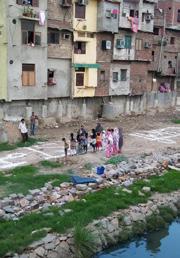
































By replacing and upgrading parts of the existing phone and internet network, nbn is bringing more Australians access to fast and reliable broadband services.*



Most homes and businesses need to switch







As most existing landline phone and internet services will be disconnected, it’s important you switch a ected services before your disconnection date.^ nbn will notify you by mail once you can switch to a new plan over the nbn™ access network. You’ll then have up to 18 months before existing services are disconnected.^
nbn is a wholesaler












This means nbn does not sell to the public. nbn supplies phone and internet providers with wholesale services they combine with their own
network services to deliver your new plan. So you’ll need to contact your preferred provider once you’re ready to switch.
Factors a ecting your experience




The nbn™ access network and your provider’s network are likely to slow down when more people are online at once (particularly during typical busy periods, like evenings). Maximum speeds will also vary based on your modem, Wi-Fi and other issues.* For more information on how your particular experience will be a ected, speak to your provider.

Safety-critical devices like medical alarms, fi re alarms, monitored security alarms and lift emergency phones, may not be compatible with your new plan at all times.† To help minimise a loss in your services, check with your device provider that these will work on your new plan or whether you’ll need to fi nd an alternative solution. It’s also important you register safety-critical devices with nbn by calling 1800 227 300 or visiting nbn.com.au/compatibility.


*Your experience, including the speeds actually achieved over the nbn™ broadband access network, depends on the technology over which services are delivered to your premises and some factors outside our control (like your equipment quality, software, signal quality, broadband plan and how your service provider designs its network). nbn is a provider of wholesale speeds to internet providers. nbn™ wholesale speed tiers available to your phone and internet provider vary depending on the access technology in your area. ^ Services o ered to phone and internet providers over the nbn™ broadband access network will be replacing phone and internet services provided over most of the existing landline networks, including copper and the majority of HFC networks within the fixed line footprint. Services provided over existing fibre networks (including in-building, health and education networks) and some special and business services may not be a ected. To find out if your services will be a ected, please contact your current phone or internet provider. For more information, visit nbn.com.au/ switcho or call 1800 687 626.† The rollout of the nbn™ broadband access network will involve new technologies, and some existing devices (including many medical alarms, autodiallers and emergency call buttons) may not be compatible with these at all times. You should contact your device provider to find out if your alarm or other device will work when connected to the nbn™ broadband access network and what alternative solutions are available. For more information, visit nbn.com.au/compatibility.


 Rajni Anand Luthra ASSISTANT EDITOR
Rajni Anand Luthra ASSISTANT EDITOR
In just under a year, India will go to the polls with its next general elections.
Last time round in 2014, there was much excitement in the lead up to the elections due to the expected dominance of the Bharatiya Janata Party over the Congress. For the first time then, the major political parties used social media as a tool to attract voters, spending between 2-5% of their electioneering budgets in this sphere. Market research companies have set the amounts at INR 500 crores (AUD $100 million) and INR 400 crores (AUD $80 million), respectively.
This spend will be vastly increased as younger voters join the electoral rolls. Observers have noted that Prime Minister Narendra Modi, a clever user of social media, has already reached out to this new electoral bank. In 2017, when he delivered his shortest Independence Day speech from the ramparts of the Red Fort, it might well have been directed to a generation whose attention span
is shorter and lifespan longer than its predecessor. His eye might have been set on those born between 1997 and 2001. In the 2019 Look Sabha polls, these very individuals will be exercising their voting rights for the first time in a parliamentary election.

Modi had said then, “January 1, 2018 will not be an ordinary day – those born in this century will start turning 18. For these people, this is a decisive year of their lives.”
While the traditional rallies and loudspeakers, posters and banners will still be at play, it is expected that social media will play a large part to woo voters and also turn them away from the opposing party.
Though more than half of India’s population still does not have access to the internet, India is considered to be among the top five countries in terms of growth of the internet users. It is estimated that India has 462 million active internet users, of which 153 million are active social media users. The active social media users are growing at about 23% per year, with WhatsApp being the platform experiencing the strongest growth, followed by YouTube and Facebook.
With over 200 million users, it is
believed that 13.7 billion WhatsApp messages are sent every day. In fact, Indians alone accounted for other more than 20 billion New Year’s Eve greetings set via WhatsApp this year.
In the recently concluded state elections in Karnataka, it is claimed that the two major parties reached 1.5 million followers via 20,000 WhatsApp groups. These elections are being called the ‘WhatsApp First elections’ and the take up of this platform while surprising to many, was not fully unexpected.
Using this platform as a way to spread information - which cannot be verified, which can go viral easily, and which is spread between small groups multiplied by millions - is every political party’s dream of planting incorrect information if they so wish to do. Fact checking is di cult to do and because hats pp is such a closed channel, with all messages encrypted between senders, determining the source of false and misleading messages is nearly impossible.
While the social media platforms are developing well, the traditional print media is also strong in India with increasing circulations. In the next election cycle, they will have an important role to play as they report upon and analyse the politics of the nation.

















कूड़ा-करकट अपने घर के ऐसे कूड-करकट को जिसे फेकऩा
है, उसे रीस़ाईककल के ललए ल़ाएँ लनःशुलक सेव़ा

फेकऩा
समस़्ा है, उसे रीस़ाईककल के ललए ल़ाएँ लनःशुलक

You can drop o : आपके स़्ानी् स़ामुद़ाल्क रीस़ाईककल केन्द्र क़ा पत़ा:










You can drop o : आपके स़्ानी् स़ामुद़ाल्क
अलिक ि़ानक़ारी

RAJNI ANAND LUTHRA wrote about Indian veterans seeking acknowledgement for their service, on the occasion of ANZAC Day 2018 Bawa Singh Jagdev OAM wrote: The Anzac Day march (originally the Battle of Gallipoli or the Dardanelles Campaign) story was a good piece of journalism. But more should have been said about the battle of Gallipoli and the forces who fought in it, as the March was mainly to honour those men and women who made the supreme sacri ces when the ill-conceived strategy of Winston Churchill to control the sea route from Europe to Russia during World War I began with a failed naval attack by British and French ships on the Dardanelles Straits in February-March 1915. Although the Sikhs and Gorkhas fought together side by side with the ANZAC and nine Sikhs were enlisted in the Australian army in WW1, the request by the National Sikh Council to march in the ANZAC Day parade to honour those Sikhs was arrogantly refused until Council showed the NSW RSL the pictures of Sikhs in Gallipoli and the statements of their gallantry by Commander Ian Hamilton. Only then the RSL in 2007 allowed the descendants of the Sikhs who fought in Gallipoli to march. Coming back to your article, not much was written about the Sikhs in the battle of Gallipoli. A major part of the article was devoted to those Indians servicemen who fought in the local battles with Pakistan after 1947, which has nothing to do with any World War. Even casually reading through the statements of Hamilton, his experience and assessment of the Gallipoli battle and his recommendations will give a journalist a better and unbiased view of the subject.
I am not criticising your views, which are quite educational, but in my opinion, the contents don’t do justice to the purpose of the article. It would perhaps be a good article on the Indian Republic Day as it talks about the services of the Indian Army that fought in various battles after 1947 and not in Gallipoli, WW1 or WW2.




There are several Gallipoli monuments in various cities in India but they were established by the then British government that valued the sacri ces of the soldiers who fought the battle. Yes, India should organise its own march to celebrate its soldiers’ sacri ces but that is politics and it will never happen. On the centenary of the battle of Gallipoli, the Council requested the Indian foreign of ce in writing to send an Indian military band to celebrate the occasion so that they could march behind the band, but the request fell on deaf ears and was never even acknowledged. Editor replies: Thank you very much for your comments. The purpose of the article this year was not to reprise the Sikh (and other) involvement at ANZAC Cove. We have done this many times before, and the service and sacri ce of Indian soldiers in 1914-15 is well known and fully acknowledged now. Our article this year was about the sense of appreciation that ANZAC Parade marchers feel, and whether they would like to see such acknowledgement given to armed services personnel in India. Everyone we spoke to agreed that such acknowledgement will be welcome.
We felt that our ANZAC Day coverage this year should go over and beyond the march itself, since it is more than 10 years now that a separate Indian contingent has been marching. We made it a national report by including input from all major centres across the country.

KALYANI WAKHARE wrote about having been ‘forced’ to take up dance classes by her young daughters.


Arun Mendhi wrote: Very nice article and lovely performance by all. Keep it up and enjoy life.

Sachin Wakhare wrote: #prouddad #proudpartner. Beautiful performance by all students of Harshala.
Sreedevi Rapulo wrote: It was an amazing performance from all of you. Your efforts in learning ended up as a successful program on stage; it was a feast for the eyes to see such young children performing.
Rajni Luthra wrote: Lovely story - and one that the little ones will thank their mum for, in years to come! Well done to all three Wakhare ladies.
On Mother’s Day, NEHA MALUDE wrote about her rst pregnancy and the search for her ‘missing’ maternal instinct.

SL Pathi wrote: I re ected for quite a while on the last line “I am a bad mum.” There is no such person as a bad mum. Every woman from the moment of conceiving wants to do her best for her offspring(s). In that process mums set the bar so high that even when they fall by a notch or two they unjusti ably assume the ‘bad mother’ tag. There may be times they fall short of the high standards they set for themselves due to factors beyond their control. And there may be times it is only their perception they haven’t done their best. It is for good reasons that God - or nature - has assigned the female species to bear and nurture their progeny. Thank heavens, the male species is relegated to the back in this regard, gender equality pleas notwithstanding.
Congratulations to my girl @meghanmarkle and Prince Harry!! I’m so happy for you Meg! You deserve the best always. Xoxo Bollywood actor Priyanka Chopra, on Meghan Markle and Prince Harry’s engagement
I’m super excited! Myna Mahila Foundation is delighted to be a part of this special occasion for Ms Meghan Markle and Prince Harry. Suhani Jalota, Founer of Myna Mahila Foundation, a charity chosen by the royal couple for donations in lieu of gifts

CHITRA SUDARSHAN wrote a review of Poonam Saxena’s translation of Scene 75, a Hindi-Urdu book by Rahi Masoom Raza.

Madhubala wrote: Good job. These kind of translated novels help make Indian languages better known.
Harper Collins tweeted: Indian Link talks about Rahi Mosoom Raza’s #Scene75 and its translation by Poonam Saxena.
WHERE IN INDIA?

INDIAN LINK POLL





Do you think India should play a day-night Test in Adelaide against Australia?

Yes, why not?: 89%
No, they shouldn’t: 11%
I wish them a very long and happy married life. They should honeymoon in India and have several children. It will be cheaper by the dozen!
Boman Kohinoor, owner of Brittania & Co (Mumbai) on the royal wedding
INDIAN LINK ON INSTAGRAM
Adelaide artist Shruti Ranade Yelleshwaram shared this picture of Indian Link’s feature on her work on her Insta account instaartist_shruti. She wrote: And it is out.. all over Australia #dreamcometrue #artislife #artistso nstagram #indianlink #indianlinkmagazine



I’m really excited about attending Prince Harry and Meghan Markle’s wedding. We’ve been invited as part of the 1,200 community leaders.
Rosie Ginday, UK-based Indian-origin chef, royal wedding attendee

Excited to begin my posting in #India as Australia’s Deputy High Commissioner. Looking forward to advancing the IndiaAustralia partnership.
Rod Hilton, new Australian DHC to India




invariably created a class system; it’s a class system that reinforces the idea that we can only accept facts and information from a group of people if they sound a certain way.
It’s perhaps Australia’s worst kept secret that its broadcast media landscape is not truly representative and reflective of the nation’s multicultural crosssection of society. You turn on the television or the radio and you are greeted by faces and voices that are inextricably interchangeable.
Morning television is exclusively a cesspool of whiteness. Private media channels seem to have little interest in changing this dynamic.
The burden of being ‘diverse’ – if I can use that word without rolling my eyes – has thus far fallen on the shoulders of public broadcasters such as the ABC and SBS. It is no surprise then, that two out of three guests on the panel (Media in Full Colour) discussing diversity in the Australian media landscape at this year’s Sydney Writers’ Festival, were from the two public broadcasters – Jeremy Fernandez (from the ABC) and Marc Fennell (from SBS).
On the question of voices and accents in the media, Fennell comes out all guns blazing. He makes the point that despite coming from different backgrounds, having different skin colour and ethnicities, all news readers sound the same, or at least are expected to sound a particular way. This style of disseminating information has
The most seductive liberal narrative of our times is that we as a society are continuously moving towards progressive ideals. It’s a narrative that is selfperpetuating because of how much it provides a dose of comfort – yes, the rise of Donald Trump and the populist backlash against embracing progressiveness it has brought seems alarming in the short-term, but throughout history, we have continued to strive in making our world a fairer, more inclusive and a more tolerant place to live.

Except that’s not the whole story.
The problem with this nostalgic and rosy outlook where social progress is the default outcome in the long term is that it works really well as a self-rationalisation tool. You don’t actually have to be doing anything to get to the eventual outcome because it’s understood to be almost preordained. And it becomes too easy to look back a generation or two – think how much more accepting and tolerant you are than that older relative of yours who still makes casually sexist and racist remarks at dinner parties – and give yourself a pat on the back for doing such a splendid job.
Because the resonance of this liberal narrative is so strong, everyone is all too happy to jump on the bandwagon. Progressive ideals are intuitively attractive and marketable. Everyone wants to be ‘diverse’. Diversity has become a buzzword that has a lot of social currency. We love
talking about diversity. I might be wrong, but right this minute, there must be a panel talking about diversity somewhere in the world. The Man Booker Prize winner Marlon James – and previous guest at the Sydney Writers’ Festival – wrote an acutely illuminating piece about why he’s done talking about diversity.
“It’s not just that diversity, like tolerance is an outcome treated as a goal. It is that we too often mistake discussing diversity with doing anything constructive about it. This might be something we picked up from academia, the idea that discussing an issue is somehow on par with solving it, or at least beginning the process. A panel on diversity is like a panel on world peace. It should be seeking a time when we no longer need such panels. It should be a panel actively working towards its own irrelevance. The fact that we’re still having them not only means that we continue to fail, but the false sense of accomplishment in simply having one is deceiving us into thinking that something was tried.”
The problem is, of course, that there is no nuanced understanding of what diversity is or ought to look like in practice. Organisations appear to interpret diversity in ways that are most compatible with their existing ecosystems and hence, are least threatening to the existing status quo. Often this mindset leads to reductively equating diversity with skin colour. Fernandez is quick to deride this way of thinking, emphasising that diversity is “not an idea of a rainbow array of people standing beside each other holding hands”.
These kinds of panel discussions around diversity – whether they are about gender, cultural backgrounds and/or experiences in general – happen dime-a-dozen at many writers’ festivals across the globe.

It’s like preaching to the choir: most of the audience members would call themselves ‘liberal’ – basically the kind of people who want to attend a talk about ‘diversity’ in the first place. Even at this panel discussion, moderator Andrea Ho brought up this expectation that persists: that it is up to individuals from non-white backgrounds to ‘fix’ the diversity issue –somehow it’s always up to the people of colour to be the gatekeepers of teachable moments.
This way of framing the diversity issue is extremely reductive and has so far yielded no rewards. People of colour have been sharing their experiences and insights – much like this panel – on diversity in various contexts for a long time. But until the debate around diversity is framed as something that society as a whole needs to address on a structural and institutional level, there is little hope to make any meaningful progress.
At the end, the audience applauds wholeheartedly, as if they have just been injected with a shot of self-awareness into their system. Everyone silently acknowledges the need to be more diverse and goes home happy, feeling they have done their bit in adding their two-cents to the social progressiveness discourse.
And you wait for the next writers’ festival to do it all over again.
“If you were a geek growing up, you’ll recognise how lonely it can be. If you were the female geek, you’ll know it’s far lonelier,” says Angela Saini in her book Inferior: How Science Got Women Wrong, which takes on biased assumptions and sloppy research against women in science.


In her work, the British writer and journalist, who was recently in Sydney as part of Sydney Writers’ Festival 2018, attempts to understand why women have not been represented well in science and technology fields.
She realises that women still live under the shadow of a legacy that perpetrated myths of women being intellectually inferior to men, carrying forward centuries of systematic exclusion and prejudice.
Angela spoke about myths and truths to differences in how men and women think
and feel. Talking about Charles Darwin, whom she admired, Angela said he was careful and detailed but didn’t extend that thoroughness to his hypothesis on women’s inferiority. Her chapter titles are self-explanatory: Woman’s Inferiority to Man; Female Get Sicker But Males ie uicker ifference at irth he Missing Five Ounces of the Female Brain; Choosy, Not Chaste and The Old Women Who Won’t Die.
She was also part of another event lead by Deb Verhoeven, ‘Women in Tech: Okay Ladies, Now Let’s Get Some Information’, along with Aminatou Sow, co-founder of Tech LadyMafia, and Elanor Huntington, first female Dean of Engineering and Computer Science at the Australian National University. Theirs was a lively discussion about why science and technology industries continue to remain boys’ clubs and how women can make a dent, regardless.
Angela shared how she was the only girl in class, in college and school, which was in direct contrast to her egalitarian upbringing. “My father was instrumental in cultivating my love for science,”
she reveals. “He was an engineer and whenever he was building something at home I would help him.”
And yet, she felt lonely in the outside world because she was an exception. “I still felt I wasn’t female enough. That somehow was different because en oyed Math and Science.”
Her research helped her debunk some of her own constructs. “There is
no difference, realised, be it spatial awareness, psychological studies, mathematical reasoning, language, cognitive or IQ. We have known that for a years. o difference, she says.
Which, of course, leads to her next question. “Why was I the only woman? It’s because of choices and circumstances. At home, I got the message that it was good to do, other women weren’t getting that message and were making different choices,” she points out. “Being a British Indian helped. It was inculcated in me that engineering was a plum profession.”
People, Angela adds, still see inequality as a result of a biological fact, “It is a problem. A lot of people in Silicon Valley see it that way. That’s what the Google guy thought, who wrote that memo about women.”
[In August 2017, Google fired a software engineer who wrote an internal memo that said that there were fewer women in technical positions as a result of biological differences and not discrimination.
Yet, we have to be careful of adding to the stereotype threat, whereby women think tech and science worlds are di cult, sexist, and a struggle for them. “It pushes them away. Hearing that isn’t going to make me want to enter the profession. Think about immigrants and the kind of jobs they take up and why,” she says.
She provides a sound analogy for her case, “Look at the Indian immigrants in the ‘70s and ‘80s, their parents told their children: be a doctor, or a lawyer. Why? It brings them status, money, security. There is a proven path, a good career. See how well British Indians are represented in medicine today. That’s what we need to do with women.”
Indeed, Angela would be happy to note that even though Australian women in STEM continue to be few and far between, there are many role models here from our own community, including mathematician Prof. Nalini Joshi AO, and inventor and scientist Prof. Veena Sahajwalla. (Sahajwalla incidentally, is often referred to as the poster girl for women in STEM in this country.)
Positive reinforcement is the key. “I had loads of ob offers after finished my degree,” she revealed. “We need to remind girls that this is a bankable degree for you. That you will get paid well. You will definitely get a job, in fact, jobs will come knocking at your door.”

to tell n women t at sc ence and tec are d cult c o ces o career, says Angela Saini
I still felt I wasn’t female enough. That somehow I was di erent because I enjoyed Math and Science
It’s so simple to be happy, but it’s so di cult to be simple. ut ussie couple Mark and Cathy Delaney and their two children, Tom and Oscar have definitely disproved what Rabindranath Tagore once said.
For the Brisbane-based couple, who moved to Barapullah (Delhi) years ago and now call a modest one-room accommodation their home, simplicity is a way of life. Mark and Tom’s book, Low Carbon and Loving It is a testament to that.

Based on sustainable living, their observation of Australian lifestyle and personal lived experiences in Indian slums, the book is a collection their unique perspectives. The Delaneys hope that it would contribute in some way to reverse the devastating impact of climate change. Only in their case, they practise what they preach.

“We share a fairly small room with one fan, one light, and a few electrical devices using little electricity. As do our neighbours,” says Tom. “Australians
consume a lot more, in large houses with air conditioning and running pumps for their pools. Our poor neighbourhood has made me acutely aware of how wasteful we are in Australian society.”

According to them, an average Australian consumes 23 tonnes CO2e to the Indian normal of 2.3 tonnes. The father and son were shocked when they visited in 2014. “People were still leading high carbon lives. We wanted to alert people to the gravity of the situation,” says Mark.
“We need to come to a sensible middle ground,” adds Tom. “High carbon luxuries in the west like car, meat consumption, flying that are seen as necessities, actually aren’t. We don’t want to romanticise poverty yet we note our neighbours remain remarkably content even though they don’t have all the stuff we have there.
Their book weaves in their Indian storyline, lays out the problem of climate change and offers practical recommendations on reducing carbon footprint in six areas - the stuff we buy, diet, local travel, long-distance travel, electricity consumption and accommodation.
Their story begs the question, how did all this happen? “Cathy and I had this moment of epiphany during our university years: life isn’t all about getting the big job and the big
salary and feathering your own nest,” says Mark. “It’s more about trying to serve and care for other people, taking a broader view of society.”

The Australian-born couple’s decisions were in tandem even before they met. After completing his legal studies, Mark decided not to be a lawyer, he felt it was a hectic path more focused on money than people. Cathy opted to work with homeless kids in Brisbane, after a degree in Mathematics and Computer Science.
With similar mindsets and Christian faith strengthening their resolve, the pair left a comfortable existence in Brisbane to move countries and into a tiny one-room dwelling in Barapullah, Delhi, where they lived, birthed and raised their sons Tom, 21, and Oscar, 16.
It was an immersive experience from the word go. “We were sensitive about not being the foreign expatriate know-italls, barging in to fix problems without understanding the situation,” says Mark. “So we first spoke to Indian friends and colleagues, learnt Hindi to be able to speak to ordinary Indians, committed to living here for a long period, and we have always worked with local organisations.”
Mark used his degree to help the disadvantaged get various entitlements
from the Indian government. Moving from an advanced country to a developing one was a big adjustment, but it wasn’t too bad. “As Aussies, we have grown up camping so our lifestyle here is a lot like permanent caravanning. Small space, be tidy, walk to the toilet block, bring water,” says Mark.
The real alterations were in always appearing different, adapting to culture and learning Hindi. “For an introvert like me, it was hard dealing with the sheer number of people who approached us wanting to talk, saying Angrez, angrez kahan se aaye hain?” he laughs.
Cathy had her own path to chart as a white-skinned woman and being perceived as morally open-minded. “I was 30 when I first arrived and had a lot of men staring and touching, those kind of things,” she recalls. “There was a lot of adjusting in the early days, a very different cultural setting to get used to. Simple, external things like my way of dressing, how quickly I walk, who walks in front.”
Her Muslim neighbourhood necessitated a vital style change. “Early on, I realised that being viewed as

e Aussie family t at calls a el slum ome nds t at a ness as new mean n or t emBarapullah slum
someone with moral standards made a big difference to my life, she confesses. almost exclusively wear salwar-kameez and a dupatta, and cover my head outside.”
She won brownie points for sewing and cooking. t would be different if was hopeless at cooking,” she jokes. “I really enjoyed traditional handcrafts of women, it gave me social credit. In those ways I could fit in, and in other ways I couldn’t.”
In contrast, Tom’s childhood experiences were seamless and filled with memories of classic Indian games like Ludo and cricket. “Children are quite good at looking past differences in skin colour,” he says. “I was conscious of being white and my friends being brown but differences weren t that deeply ingrained since I’ve grown up in this environment and am fluent in Hindi.”
Yet the cognizance of stark disparities in their lives still existed. “Though we lived quite simply, I’ve never been hungry any day in my life whereas many of my neighbours have,” Tom says. “I had nice toys to play with, they didn’t. It does make a profound impact when your friends don’t have enough to eat sometimes.”
“When Tom was 10 or 12, he felt after
Delaneys family room (l to r): Tom, Cathy, Oscar and Mark
visiting friends in our neighbourhood that our house was so big, but after visiting our American friends in another suburb, that it was so small,” Cathy recounts. “A simple observation on how relative life is, you interpret things differently depending on who you hang out with. We grew up thinking life in Australia is normal and our kids have grown up thinking it’s not.”
Do they feel Australian or Indian?
“We largely feel Australian although back home, we don’t,” Cathy says. “We are also less and less nationalist, I guess. These labels seem silly, we see issues in a different light now.
Mark admits he thought they would head back to Australia for the kids after a few years, “be normal, get a job and buy a house”. Then the couple realised that raising them in a poor neighbourhood

was actually a very good parenting setting.
“Our children are really grateful for the things they have since they see contrasts with friends who have far less. They hold a very broad and nuanced perspective on life,” says Mark.
“They weren’t deprived,” clarifies Cathy. “Everything we felt was important for our children to have, they have had. We spent lots of time with them, always had wonderful family holidays, good friends, met grandparents and relatives back home every few years.”
or the most part, different friends and family members helped the Delaneys survive with $20, $50 or $100 dollars a month. “We live frugally, it doesn’t take many dollars to live in a basti. Sometimes, we qualify for benefits from the Australian government, at times we worked in
Australia and saved money,” Cathy shares.
Though the family had financial requests from neighbours, and organised funds for them, they kept the footing equal. “We always need to find ways of mutuality. It’s important to recognise that living here we receive a lot from people in culture and spirit,” says Tom.
Two decades on, they are all still stationed in India and he is carrying forward his parents’ legacy of service working with a literacy organisation, Devi Sansthaan. Mark points out, “Desire, consume, repeat is the mantra of our capitalist society. It creates artificial desires, saying this product will make you happy. That is a fundamental lie. Happiness does not come from a new product or feature. Happiness comes from relationships, nature and from living a peaceful life.”

We share a fairly small room with one fan, one light, and a few electrical devices using little electricity. As do our neighbours









onash University PhD student Muthu Vignesh
Vellayappan has taken out the Audience Choice Award at the recently concluded science communication contest FameLab.

He was one of 12 finalists who shared their science stories at the 2018 National Final held in Perth.

His presentation, based on his own research, was about new treatments for heart disease.
FameLab is a science communication competition that seeks out young scientists and researchers keen to give their work a wider reach. It requires them to make a three-minute presentation in a compelling way, to a lay audience. The use of Powerpoints - or even scientific jargon - is not permitted: all they have at their disposal is charisma and clarity.
Talking about his work, Muthu told Indian Link, eart disease affects in Australians, and kills 1 person every 12 minutes. Heart transplants remain the only definitive treatment, but donors are limited and most patients die while waiting for a transplant.”
There are two other techniques of treatment to replace the 2-3 million heart cells are damaged in each heart attack. Both techniques however, have their shortcomings, Muthu recounted.
“In one procedure, heart muscles are
injected into the damaged region, but the problem is they don’t stay put in the affected region and are known to migrate. In another technique, a patch, a kind of Bandaid containing heart muscle cells, is applied to the effected region, but the issue here is that the patch doesn’t align effectively enough with the damaged parts, leading to poor healing.”
His own work deals with overcoming the shortcomings in these regeneration techniques.
“My research involves the design and development of material that can be used as the patch. Specifically, the patch must have grooves on its surface so that it can snuggle along the groves of the surface of the heart, align effectively and seal the damaged region.”
Hence the name ‘Groovy Patches’ for Muthu’s FameLab presentation.
Currently in his second year of PhD at Monash University’s Materials Science and Engineering Department, the 29-year-old has so far has successfully 3-D printed the material to be used as the new and improved patch.
“I am in collaboration with polymer scientists in France to prepare the grooves on it. Once these are developed, I hope to test it on rat heart muscle cells to see how they respond.”
To make his FameLab presentation ‘groovy’, Muthu used a heart pillow and an empty syringe and bandages to show the methods of treatment currently used.
“I was pretty nervous but the audience seemed to love it and that boosted my confidence. They responded to each line I spoke, indicating that they understood, and I am so thankful to them. It was their
polling, as well as the polling from an international live stream audience that got me my award.”
The Madurai lad finished his Bachelor’s degree in India and took a Masters’ degree in Malaysia before joining Monash just over a year ago.
“FameLab has been a rewarding experience,” he revealed. “I put in my application without knowing much about it and got through the state level. After that, the training by international trainers and communicators was simply wonderful and I felt as though I improved considerably. I took feedback from friends, colleagues and supervisors and prepared some 30 versions of my script and multiple YouTube videos, optimising till the end.”
He added, “Listening to the other participants was fascinating. Networking with other early career scientists broadened
my horizons and reinforced to me that science can be impactful to people’s lives and meaningful to society, but also interesting and intriguing in itself.”
Muthu has been a science geek since childhood. “Science has always fascinated me, and I realise now, looking back, that science communication has been an inherent passion. Even as a young kid, I loved looking up science facts such as why is the sky blue and not any other colour. And I wouldn’t stop there, I’d actually tell my friends about it at play.”
He seems like a perfect fit for a contest like FameLab. The largest science competition in the world, some 7000 early career scientists from the world over have participated so far. With partnerships with British Council, NASA and CERN, it has been going for 12 years now and has attracted participation from 30 countries.

Here’s a chance to do your bit for your community, and having some fun while you’re at it. Being part of a community means celebrating togetherness. But it’s not just about coming together for festivals, it also means coming together to help each other out in times of need. So if you want to give back to your community, here’s a golden chance: An inaugural Gala Dinner to raise funds and awareness for Blacktown and Mount Druitt hospitals.
To be held on 26 May at Rooty Hill RSL, the event is aimed at the development of a new outpatient and specialist clinic within the Children’s Ward at Mount Druitt hospital. The spectacular evening has plenty of entertainment in store for guests and a variety of fundraising options.

Planet Groove, a live band that has had over 800 shows has been roped in for the event to regale the audience with some terrific music. There will canapés on arrival, a delicious three course meal and beverages and a selection of fundraising options including live and silent auctions, Lander Toyota car draw and raffles. The event is hosted by the newly established Better Foundation. Being the only dedicated fundraising body for both hospitals, Better Foundation aims to enrich the health and lives of people in our communities through the delivery of exceptional patient care and innovative clinical practice.
Committed to raising vital funds and awareness for Blacktown and Mount Druitt hospitals, the charity aims to fund specialist medical equipment and innovative research programs and to support professional development and clinical education. These events, and more to come in the future, are hoped to make a real difference to the health platform of Blacktown’s local communities. The idea is to bridge the government funding gap and improving the health and lives of residents in Blacktown, Mount Druitt and the surrounding areas.
As locals in the area might well be aware, both Blacktown and Mount Druitt are undergoing new building,
refurbishment, infrastructure upgrades and service expansion, a clear indication that the community’s healthcare needs are everincreasing.
Blacktown has already been transformed into a major tertiary hospital and Mount Druitt continues to be the one-stop shop for surgery and high quality care. As a result, the need to travel out of the area for treatment is being reduced as more services are provided closer to home.
Both hospitals are affiliated with Western Sydney University which aids in providing excellence in care in conjunction with a commitment to clinical teaching and medical research. The hospitals have an average of 645 daily available beds and care for over 76,000 people via the emergency departments each year.


The focus of the gala event is on supporting medical and nursing research with over 100 projects being carried out in laboratories and hospital wards. The range of disciplines and areas of interest include cancer, diabetes, paediatrics, endocrinology, weight loss surgery, anaesthetics, infectious disease, stroke, speech pathology, pharmacy and palliative care.
Community support and fundraising plays a vital role in the delivery of hospital services. Your collaboration with the Better Foundation will directly support the hospitals’ innovative research programs that will ultimately lead to earlier diagnosis, better treatment and management, new therapies and potential new cures. Your generosity will ensure that state-of-the-art medical equipment can be funded and pioneering clinical treatments developed to improve the health and wellbeing of people in Western Sydney.
As Ralph Waldo Emerson once said, “The purpose of life is not to be happy. It is to be useful, to be honourable, to be compassionate, to have it make some difference that you have lived and lived well.”
For enquiries about the event or to collaborate with Better Foundation, please call Sonia Daniels, Fundraising and Events Manager on 0429 413 194.



Friday 6th October 2017
Time:
CULTURAL ENTERTAINMENT

#EveryoneDeservesRespect
WHEN
Bollywood extravaganza
Sat 19 May (5.00pm – 5.30pm)
A charity event for the Hindu Benevolent fund used for those affected by cyclone in Fiji. Paci c Hills Christian School Performing Arts Centre, Dural, NSW. Details 0430 157 679/ 0419 573 328
Shaam-E-Meh l
Fri 25 May (6.00pm onwards) Sewa Australia presents Shaam-e-Meh l, an evening of golden hits with live musicians and talented singers. All the proceeds will directly go to Family Support Services. At Madison Function Ctr, 632 Old Northern Rd, Dural NSW. Details 0412 705 796/ 0404 044 276.
Better Foundation Gala
Sat 26 May (6.30pm – 11.30pm)
A premium fundraising event to raise vital funds needed to support Blacktown and Mount Druitt hospitals. A spectacular evening with a live band, a delicious three course meal, live and silent auctions, and raf es. Details 02 9712 3861
Vision 2020 Charity Ball
Sat 19 May (7.00pm onwards)
Cherrybrook Community and Cultural Centre Funds raised for the Aiyaswamy Aiyer School in Chennai, India. Details 0468 947 761
Bollywood night
Fri May 18 (7.00pm – 10.00pm)
A fun Bollywood-themed night to raise funds and awareness for the Westpac Rescue Helicopter Service. At Arabian Lounge, Shop 5, 1 Tuggerah Parade, The Entrance.
Richa Sharma live in concert Sat 19 May (7.00pm onwards) Richa Sharma live in concert at Whitlam Leisure Centre 90A Memorial Ave Liverpool NSW 2170. Details 041 277 9418.
Poetry meets music
Sat 19 May (6.45pm onwards) Avijit
Sarkar and Nautanki Theatre present Saaz-e-dil featuring Avijit Sarkar, Kumud Merani, Srijani Dan and Uzma Gillani, at Riverside Theatre Parramatta. Details 02 8839 3399
Mohanlal Star Nite
9 June (6.00pm – 9.00pm)
Mohanlal star night at Sydney Olympic Park sports centre Sydney. Details 0470 293 581/ 0412 211 627.
Dinner and dance Sat 26 May (7.00pm – 12.00am)
Goa NSW Inc presents 41st RocknRoll dinner and dance at Club Marconi Plaza, Prairie Vale Rd, Bossley Park. Details 8814 9258/ 9831 4619.
FESTIVAL
Ramadan dinner
Fri 18 May (4.45pm – 7.00pm)
25th Annual Ramadan Dinner hosted by the Islamic Charity Project Association. Venue: Al Amanah College Assembly Hall, 56 Nagle St Liverpool, NSW. Details 9707 4842, 0413 914 189.
Ramadan Iftar
Mon 21 May (4.30pm – 7.30pm)
The Muslim Legal Network (NSW) is hosting its Annual Ramadan Iftar. At Doltone House Hyde Park Level 3, 181 Elizabeth Street, Sydney, Australia 2000.
Ramadan Eid Bazaar
Sat 9 June (3.00am – 11:46am)
Enjoy an evening lled with fun, shopping experiences and delicious food and beverages. At 90A Memorial Avenue, Liverpool NSW 2170. Details 0406 449 474/ 0469 646 171.
Rabindra Jayanti
Sun 20 May (6.00pm – 9.00pm)
Bengali Association of New South Wales presents Rabindra Jayanti 2018 at Paci c Hills Christian School, Dural.
Free Tech Savvy Seniors Workshop Learn basic computer skills at your local library Parramatta Library (10.00 am – 12 noon)
23 May Introduction to Social Media
part 2
Denis Johnson Blacktown Library (10.00am – 12 noon)
6 June Introduction to Internet 1
13 June Introduction to Internet 2
20 June Introduction to Email
27 June Introduction to Social Media
Rights discussion
2 June (2.00pm – 5.00pm) A session for senior citizens, ‘Everyone Deserves Respect: A Discussion On Your Rights’. At Blacktown Senior Citizens Centre 2 Gribble Place, Blacktown. Details 0412 786 569.
AASHA at Hornsby
Every second and fourth Friday of the month, 11.00am – 2.00pm. Venue Hornsby Youth and Community Centre, cnr Muriel and Burdett Sts, Hornsby, close to Hornsby Station. Programs feature yoga, music, dance, games, health and tech presentations, health checks and light lunch. Details 0412 786 569
Crows Nest
Every third Wednesday of the month, 10.00am – 11.30am. Venue 2 Ernest Place, Crows Nest. Social event with free tea. Details 02 9439 5122
LANGUAGES
BSK/SVP Classes
A local initiative of VHP Australia, Bala Samskar Kendra (BSK) holds Sanskrit language lessons as well as a culture and heritage program on Saturdays at Oran Park School, 390 South Circuit, Oran Park. Details 0450 117 372
Hindi Classes
Saturdays (2.30pm – 4.30pm)
Located at the Indian Cultural Centre, Level 1, 265 Castlereagh St, Sydney. Hindi classes are $5 per one hour class or $40 for ten classes. Registration is essential. Details icc2. sydney@mea.gov.in.
MISC
Wedding Expo
27 May (11.00am – 3.00pm)
Delight Wedding Expo so that you can plan your wedding with the best wedding photographers, planners, DJs and entertainment. At 72 Glenwood Park Drive Glenwood. Details 02 8814 7649.
Telangana Celebration
2 June (5.00pm – 10.00pm) A free entry event that includes cultural programs, activities and games for children and dinner. At Greystanes Community Centre 732 Merrylands Rd, Greystanes, NSW 2145. Details 02 9631 4832.
Hindi conversations over chai
Every Thursday, a group of Hindi students and speakers who are enthusiastic to use language learning to build cross-cultural friendships. At CCH Ministry Centre, The Bridge Unit 4, 67-71 Jersey St, Hornsby (enter off Jersey St near corner with Bridge Rd). Details 0432 920 259.
Community Recycling Centres
Community Recycling Centres are permanent drop-off facilities, open year round. Use them to safely dispose of selected common household problem wastes such as paint, gas bottles, re extinguishers, motor and cooking oils, car and household batteries, uorescent tubes and globes, and smoke detectors. Details call the Environment Line 131555
Simran and Meditation Diwan
Wed 30 May (6.30pm – 8.30pm)
Come and enjoy the peaceful diwan at Gurudwara Turramurra Sikh Temple, Sydney at Kissing point road, Turramurra, New South Wales, Australia 2074. Details 02 9449 8253.
Indian Cooking Class
27 May (10.00am – 2.00pm) A delicious, vegan, organic Indian banquet of Love Lunch cooking class and two course meal at The Green Lion, 726 Darling Street, #Level 1, Rozelle, NSW 2039. Details 0424 115 466.
Yoga Workshop
Fri 18 May (5.30pm – 7.00pm)
Participate in a free of charge yoga workshop that includes a lecture and demonstration on asanas for backaches. At Indian Cultural Centre, Consulate General of India, Sydney, Level 2, 265 Castlereagh St – 2000. Details 02 9223 2702.
Seeking Volunteer Drivers
Social welfare organisation Open Support is seeking kind-hearted locals to become volunteer drivers for its Country Care Link service. This is a no-cost transport service for regional NSW families, couples and individuals who require vehicle transport when coming to Sydney for medical appointments and hospital stays. Details 02 8382 6430.
MAINSTREAM
Biennale of Sydney 2018
Till 11 June: View the works of Indian-origin artists exhibiting as part of the ongoing Biennale Sydney 2018 this year – Simryn Gill, Tanya Goel, NS Harsha, Prabhavati Meppayil, Sosa Joseph and Khaled Sabsabi. Details 02 8484 8700
Tales from the East: India and NSW 27 April – 26 Aug Old Government House, Parramatta Park, Parramatta. Details 02 9635 8149
Exhibition
29 May (6.00pm – 7.30pm) An exhibition of photos, Sydney Asian Art Series: Transcultural Attractions: Photographs of an Indian Dancer with a lecture by Ajay Sinha, Professor of Art History at Mount Holyoke College, USA. At The University Of Sydney, Old Geology Building, Parramatta Road, Camperdown, NSW 2050. Details 02 9351 4211.
To have your event listed, email media@indianlink.com.au
Does Goa need to be sold as a tourist destination?
No harm in giving people a refresher course, thinks the Government of Goa, India’s favourite holiday spot.
It sent a delegation down to Australia and New Zealand, led by avin ia , O cer on special duty at Goa Tourism and Arvind Khutkar, Undersecretary to Goa’s Minister of Art, Culture and Tribal Welfare.

Speaking on Indian Link radio, Diaz admitted that it has been a challenge in attracting Australians to Goa, given the topography of both places is quite similar.
“Both Australia and Goa have beautiful beaches, but what we want Australians to know is that Goa is more than just beaches. The history of Goa goes back hundreds of years and a tourist can enjoy the Hindu culture of the land as well as the Portuguese experience in the one place. In fact, I believe Goa can be a gateway to the rest of India, where visitors can ease into the Indian way of life and enjoy the wining and dining as they experience the unique blend of all that oa has to offer.
After India gained independence from the British in 1947, India requested that Portuguese who had control over Goa since 1510, to allow it to be ceded to India. Portugal refused to negotiate on the sovereignty of its Indian enclaves. In December 1961, the Indian Army annexed Goa into the Indian union. On 30 May 1987, Goa became India’s twenty-fifth state. Today of course, it is famously known as not a state, but “a state of mind.”
“You will never see a Goan in a hurrythere is always time for tomorrow,” Diaz
said about his home state.
It is this relaxed lifestyle which has earned Goa international fame as a tourist destination. What started as a hippy enclave in the mid-1960s blossomed into a state with luxury resorts and up market lifestyle in the 1980s. Currently, not only is Goa attracting international tourists but also has a growth spurt in local tourism from all parts of India as middle-class Indians venture further afield.
oa has more than beaches to offer its visitors,” Diaz told Indian Link. “If anyone is visiting, we will urge them to spend at least 5 days in Goa and there will still be a lot of things left over to do after that. In fact you will need to come back to Goa.”
“There are many beautiful and historic churches,” Diaz listed. “The church of St Francis Xavier, a world heritage site, is known around the world. Equally significant to our state are the Hindu temples from the 12th century. For those who want to learn more about spices, Goa has spice plantations the products of which are increasingly being used in medicinal ways. For those interested in nature, not only do we have some of the most beautiful beaches, we also have the nesting grounds of the famed Olive Ridley Turtles that are a huge attraction during egg-laying and hatching seasons.”

Khutkar, who works closely with tribal welfare, also was keen to talk about the traditional arts and crafts which can be explored on the hills of Goa. “Cultural tourism is on the way up in Goa,” he revealed. “Tourists are enjoying learning about the tribal lifestyle and getting involved in local arts. Traditional markets are also very common in Goa which are increasingly becoming popular with the tourists. These
markets complement the flea markets where you can pick up bargains.”
For adrenaline junkies, there’s jungle trekking, beach trekking scuba diving, white water rafting in the Mandovi River, camping, ATV biking, parasailing, water-skiing, windsurfing, snorkelling, sports fishing, yachting, harpoon fishing and kayaking.

And of course, Goa is the home to the
traditional feni, a local brew much enjoyed across the nation now. “Made out of cashews, feni is the must-have drink for those over 18 visiting Goa.”
With so much to do and enjoy, Goa should be a must-do holiday for anyone going to India.
“What are you waiting for?” asks Diaz.
Pawan Luthrae ns ders u de to v s t n GoaGoa Tourism officials at an Indian Consulate reception Bom Jesus Basilica
The results of Karnataka assembly polls must have come as a disappointment for the Congress party and its ambitions for the 2019 Lok Sabha polls, but it can take some solace from the fact that it was able to deny the Bhartiya Janata Party an outright victory in the crucial southern state.
The results are likely to boost the present churning to forge an anti-BJP front for the next general elections with opposition parties expected to exert more pressure on the Congress to go for state-specific alliances even in states where it is the main force against the BJP.
The party’s decision to support Janata Dal-Secular (JD-S) in the government formation in Karnataka to prevent BJP from coming to power has implications for the party’s preparations for the 2019 elections.
While it will be required to share political space with JD-S in Karnataka when a coalition government is formed, there will be demands from other parties for alliances in states such as Madhya Praesh, Rajasthan and Chhattisgarh which will go to the polls later this year.
The Karnataka elections were crucial for the Congress to build momentum for the 2019 Lok Sabha polls and for three assembly polls later this year.
It was also significant to raise morale of Congress workers as the party is in power now only in two other states - Punjab and Mizoram, besides the union territory of Puducherry.
The results were also seen as crucial to boost Congress President Rahul Gandhi’s image as an effective campaigner against Prime Minister Narendra Modi in view of their likely run-in in the 2019 polls.
The Congress put its heart and soul in the campaign, with Gandhi campaigning in a large number of constituencies but the results showed the party’s vulnerability to BJP’s skills at executing social coalitions, micromanagement and giving intensity to campaign.
Gandhi had spearheaded the party’s campaign in Karnataka with frontal attacks on Prime Minister Modi but it apparently did not have the kind of impact the party was hoping for.
Gandhi repeatedly hammered the issues of jobs, atrocities against Dalits and women and the multi-crore banking frauds. During the campaign, he also expressed his willingness to become the prime minister if the Congress or a coalition led by the party wins next year’s Lok Sabha elections.
he ongress suffered a sharp drop in its numbers in Karnataka despite favourable factors such as apparent lack of anti-incumbency and the party having a strong state leader in Siddaramaiah whose government was seen to have delivered on pro-poor schemes in the last five years.
But it was successful in garnering more votes than the BJP, while getting 26 less number of seats at 78. Also, had it fought jointly with JD(S) in a pre-poll alliance, the total tally of the two parties, at over 54 per cent of votes, would have overshot BJP’s by a large number. This shows a lack of planning or political vision.
It was cold comfort for the party that its vote share had risen compared to 2013 elections when it had won 122 seats. The party had polled 36.79 per cent votes in 2013 and 38 per cent this time round.
Like in Gujarat where Congress had also put up a spirited fight, Prime Minister Narendra Modi energised the BJP’s campaign in Karnataka in the last phases holding 21 rallies in a span of nine days.
The Congress will continue to face challenge of meeting BJP’s formidable election machine in Madhya Pradesh, Rajasthan and Chhattisgarh with Modi expected to help the BJP governments beat anti-incumbency with his oratorical skills.
The Congress also apparently miscalculated that the Dalit community, which has a sizeable presence in Karnataka, was quite upset with Modi government on a range of issues including the “delay” in filing review petition in the Supreme Court over “dilution” of the SC/ ST Act.
The Congress decision to recommend minority status to the numerically strong Lingayat community and spur subnationalism in the form a separate state flag also apparently did not work in the desired way for the party.
Gandhi has largely been unable to come up with an answer to Modi’s oratorial and Amit Shah’s managerial skills. He will get three more opportunities this year where he can at least show political acumen of bringing together the right coalitions - before polls - to challenge the main weapon that the BJP has. If he cannot, then 2019 would turn out to be a bigger disappointment for him and his party.
The controversial Taj Heritage Corridor which brought down the Mayawati government in 2003 is being resurrected in a new avatar - but disturbing questions remain, environmentalists say.
The Uttar Pradesh horticulture department, in collaboration with the Archaeological Survey of India, has started greening the vast wasteland sandwiched between two world heritage monuments, the Taj Mahal and the Agra Fort, after the local MP and the chairman of the SC/ST Commission Ram Shankar Katheria laid the foundation stone of the new Taj View Garden a few days ago.
The Supreme Court, some 10 years ago, had asked the Archaeological Survey of India to clean up the debris from the corridor site and develop the 80 acres of reclaimed land as a green buffer to insulate the Taj Mahal from air pollution. But for want of resources, it took more than a decade for the work to start.
“We have laid a new lush green lawn and lined up ornamental plants. Come rainy season and the whole area would be a green delight and attract tourists,” UP horticulture department’s garden superintendent Mukesh Kumar said.
Agra Mayor Navin Jain has promised that the municipal corporation would extend the green frontiers and maintain the
A pair of egrets prepare to build their nest in Panbazar area on the banks of the Brahmaputra river in Guwahati, India, 11 May 2018. This is the season of the year when hundreds of egrets build their nests on trees in the thickly populated Panbazar area oto A

newly-developed park.
Once completed, the green stretch will be a new attraction for tourists.
Till recently the land was being used not only as a dumping ground for garbage but also as a place to bury bodies of children and aborted foetuses. The sprawling 80acre platform, recovered through dredging of the river bed and refilling of the open space, was left unfinished after corruption charges were levelled against Mayawati. The charges eventually brought down her government.
The corridor was to begin from Khan-eAlam, close to the Taj Mahal, and extend two kilometres towards the city behind the Agra Fort. It was to be extended later to allow tourists to reach Etmaddaula and Ram Bagh on the other side of the river.
For months, hundreds of tractors, earthmovers and machines worked round the clock to dig out silt and deposit it on the river bank to create a new platform, which was laid with Rajasthani stones.
The space was to be used to erect tall buildings, amusement parks, shopping malls and the like.
But, after a hue and cry from conservationists that the corridor would endanger the monument and allegations of large-scale corruption in the project, the Central government suspended the work in 2003. The alleged scandal reportedly involved government allotment of large tracts of land along the proposed corridor to a private builder for a song.
As the case against Mayawati dragged for years, the corridor remained an eyesore between two world heritage monuments. Scores of foreign tourists visit the site daily.
Environmentalists have on several occasions expressed concern at the alarming pollution level in the Yamuna after hundreds of truck-loads of waste, including carcasses of animals and bodies of children, was dumped into the river.
When tourists looked at the Taj Mahal from Agra Fort, what they saw was a disturbing sight - heaps of stinking garbage, carcasses and graves of children dotting the structure and mounds of rubble that invite mosquitoes, dogs, snakes, crows and vultures.
Rajiv Gupta, former president of the National Chamber of Industries and Commerce, thought that “a positive beginning has now been made and soon Agra will have a new tourist attraction”.
But local environmentalists point out that the so-called heritage corridor was, legally speaking, an encroachment on the Yamuna river bed. “That was the reason why work was stopped. Now instead of dismantling and removing the debris, they are seeking to legitimise an encroachment of public land,” said Shravan Kumar Singh of the Braj Mandal Heritage Conservation Society.
Eminent historian Prof R. Nath, who had first drawn attention to this controversial corridor back in 2002, told IANS: “This corridor should be cleared and the
Several parts of northern India have suffered thunderstorms and heavy rain this month, leaving 110 people dead and 300 injured. Seen here is a monster dust storm building up over Bikaner, India, 07 May 2018. oto A

Yamuna allowed to breathe free. Also, the artificial park created just behind the Taj Mahal on a mound of debris should be immediately cleared as it has distanced the river Yamuna which should flow touching the base of the monument. The powers that be should stop playing with monuments.”
With no cutting-edge medical equipment, air-conditioning or critical care unit in place, the under-construction building in West Bengal’s South 24 Parganas district hardly matches the popular notion of a modern medical care facility. Yet, the hospital has become a national landmark as it tells the story of a brother turning his grief into determination that helped establish it.
Taxi driver Saidul Lashkar set out on what then seemed a near impossible journey in 2004 after his sister Marufa died of chest infection as he did not have the means to get her treated in a hospital. Marufa was only 17.
Though shattered and inconsolable, Saidul took a pledge not to let anyone else in his neighbourhood die without treatment.
“I felt I needed to do something so that no impoverished person dies like she did, without getting treatment. I wish no brother loses his sister like I did,” Saidul said, leaning quietly on a wall of the newly constructed patients’ waiting hall of Marufa Smriti Welfare Foundation in Punri village near Baruipur, about 55 km from Kolkata.
Twelve years were spent chasing the dream, as the cabbie criss-crossed the streets of Kolkata, never veering for a moment from his single-minded pursuit to make the project happen. It was not at all a walk in the park, he recalled.
Saidul would talk at length about his mission to the passengers while driving and show them the documents and receipts of the donations he had received so far. But a majority refused to lend him a helping hand.
However, some did oblige, particularly a young girl, Srishti Ghosh from south Kolkata, who was so moved by his story that she decided to donate her entire first month’s salary to the hospital fund.
“I found my lost sister in Srishti. When she and her mother heard my story, they took down my number and promised to call back. I was not sure if they really would, but when she really came along and donated her first salary, I was overwhelmed,” he said.
As strangers came in ones and twos, helping him gradually raise the funds for the hospital, back home, Saidul’s wife Shamima stood by her husband like a rock.
“None of this would have been possible without my wife. When I started, a lot of people in my close circle distanced themselves from me thinking I am crazy, but my wife was there all along. She even
gave me all her ornaments to collect the funds for the land,” he said.
Finally, Saidul’s dream came true in February this year as the hospital started functioning, albeit partially, by opening its outdoor unit to patients.
In a touching gesture, Saidul got his new-found “sister” Srishti to inaugurate the hospital.
The response from the locals has been overwhelming, as the nearest hospital in the area is almost 11 km away.
“There is a buzz all around. Everybody in the area is talking about the hospital,” said Sojol Das, while driving this correspondent in his e-rickshaw to the hospital premises.
Work is now on to make it a fullfledged 50-bed hospital with other necessary facilities like X-Ray and Electrocardiography (ECG).
“This is currently a two-storied building but we have plans to make it four-storied. On the opening day, our doctors could treat 286 patients while so many others were left out due to shortage of time and resources. I am sure once it becomes fully functional, people of nearly 100 villages would be benefited,” Saidul said.
Saidul’s courage to dream big indeed impressed lots of people, including Prime Minister Narendra Modi, who praised his efforts in his radio address to the nation, “Mann ki Baat”.
Modi talking about the hospital project, the 40-something taxi driver said, has certainly given him more courage and assured him that he is headed in the right direction.
“Since his speech, a lot of people got in touch with me. any have offered help. Some local contractors have helped me out by supplying sand, bricks and cement needed for the construction work, while a doctor from Chennai has expressed his wish to join my hospital and treat patients.”
Eight doctors are at present associated with the hospital where they would be providing free service for now. However, Saidul said, they have plans to provide healthcare in exchange of a bare
minimum fee, necessary for the hospital’s maintenance.
Dhiresh Chowdhury, in charge of the orthopaedic department, was all praise for Saidul.
“Building a hospital is a mammoth task. For Saidul to do it with such a meagre income is unthinkable. We all are with him,” added the doctor, whose NGO Banchory is providing the medical equipment.
But the dreamer in Saidul now refuses to stop with only one hospital.
“Now that I have so many people with me, I feel I can go even further to fulfil my dream. Maybe I won’t limit myself to constructing one hospital. Maybe I’ll go further in search of new dreams.”
After Mohammad Haroon turned 15, he began watching Bollywood movies, walking four kilometres to a theatre near his village in Myanmar.
Little did he know that the Hindi he learnt watching these films would one day help him settle down in a foreign country to which he and his family had to flee to escape brutal persecution by the armed forces.
Haroon, a Rohingya, came to India, the country he had known from its movies, after fleeing to Bangladesh in a small hand-rowed fishing boat. That was after his cousin was raped and their huts were torched.
“I had watched about 100-150 Hindi films back home and I could understand Hindi by the time I came here (India). Speaking Hindi was a problem though,” Haroon, now 48, told IANS at a Rohingya settlement in Kanchan Kunj of south Delhi.
More than two dozen Rohingyas IANS interviewed in Delhi, Jammu and Hyderabad said they used to watch Bollywood movies in Myanmar that helped them to learn Hindi and made it easier for them to find jobs and make friends in India.
Rohingyas, mostly Muslims, are an
ethnic minority, denied citizenship and have been “facing human rights violations and violence” at the hands of the military in the Buddhist majority Myanmar.
More than 800,000 Rohingya refugees have fled Myanmar in the last five years as a result of violence, according to the United Nations High Commissioner for Refugees (UNHCR) and there are around 21,500 Rohingyas in India.
Perched on a plastic chair, Haroon, a father of four, said the love for Bollywood was strong in Myanmar. He named his favourite stars - Amitabh Bachchan, Shatrughan Sinha, Mithun Chakrabortyand quickly added Hema Malini to the list.
Harooon’s favourite movies include Mithun starrers Jagir (1984), Boxer (1984) and Disco Dancer (1982) and Amitabh and Dharmendra starrer Ram Balram (1980).
Leaving Myanmar in 2005, Haroon reached India after a couple of months in Bangladesh and worked at a chicken farm in Sonipat, where his Hindi improved further. “After one year, my Hindi was fine,” he said.
But for Rohingya women watching a movie in a theatre was a strict no-no.
Tasleema, 21, stayed behind a tattered, shabby curtain with her one-year-old son in her arms.
Asked whether she used to watch Hindi movies, Tasleema told her husband Adbul Kalam in her native Rohingya language: “I can almost understand what he is asking, but I can’t reply.”
“Our women were never allowed to go out that much. My wife and other women never watched movies,” Kalam said in Hindi. “Now they have started going out a bit after coming here.”
At Channi Rama in south Jammu, Saitera Begum, 20, shakes her head when asked whether she used to watch Hindi movies. “Muslim women do not go to watch movies in Burma,” she said, according to a relative who translated her words in Hindi.
Suhail Khan 21, agreed. “Girls would be thrown out if they came to the theatres,” he said.




























































































































































































alking down Martin Place in Sydney’s CBD, a particular light installation in a building foyer always caught Shyamal Bhatia’s eye. One lunch time, he aimed his iPhone 8 at it. As he did so, it occurred to him that the shot might look even better in black-and-white.



Weeks later, he picked this particular image from his collection to submit to an international photography competition. The Sydney-based hobby photographer is among the select few who will have his work showcased, alongside others from across the world, at the Art of Black & White exhibition at the Berlin Blue contemporary art gallery in Berlin next month.
“I’m quite proud of this shot,” Shyamal told Indian Link. “I loved it as soon as I saw it. The geometric pattern created by the vertical lines, as well as the play between light and shadow help to make it captivating. It came out exactly as I had envisaged.”
As a member of the international online community Guru Shots, a collective of photographers, Shyamal’s work is rated

by peers, and a high ranking in a recent B-and-W competition ensured his work was picked for display. (In a series of regular competitions organised by this platform, submitted works are picked for display at major centres around the world.)
The chartered accountant-turned-IT professional now has a growing collection of urban and architectural photography, all taken during his daily lunch-time walk around the city.
Walking past some of Sydney’s most striking buildings such as 1 Bligh St, AMP Centre, ANZ Bank Centre, Aurora Place, Century Tower and Chifley Tower, Shyamal began to look at them with a fresh perspective. Their foyers caught his eye too.
“I saw the buildings in a particular light and thought about capturing them in blackand-white, Shyamal offered. onuments are great subjects for monochrome photography, particularly in the afternoon light.”

They might be regular everyday sights to the casual observer, but it is clear that Shyamal sees much hidden beauty in them. These easily-missed details of daily city life turn the familiar and the ordinary into something striking and new.
As a photographer, Shyamal is constantly looking for curious sights as well as vantage points, and finds an endless source of stimuli around the city.
In the past eight months alone, he has collected hundreds of stunning images, although he claims with characteristic modesty that about 60 are worth putting into a coffee table book.
In fact, in a pet project, he has just created his first coffee table book for personal use, using online printing services. It takes pride of place in his living room.
There are stark silhouettes, graceful and rhythmic curves, and elegant arches in Shyamal’s images. And sometimes, a combination of all of these, introducing depth and variety.
Some shots are taken very close to the monument in order to magnify perspective and to draw the viewer in; in others, the photographer draws back instead.
Shyamal seems to be drawn to lines and angles, arches and curves, which help him to see his environment in a completely new light.
The endeavour has also helped him redefine his relationship with the city he has grown to love just as much as native Mumbai.
But why an iPhone? “It was convenient, I had it on hand, and it worked for me,” Shyamal replied. “The device has improved to such an extent that it produces reasonably good quality pics. Very little post production work goes into my photos: they are converted to B-and-W using the standard filter available on the
iPhone itself. At best, I play around a little with contrast.”
Shyamal took up photography as a teenager. “My dad was an avid photographer. He gave me my first camera and the first pictures I took were at a cricket match. I caught some of the action in the middle, and also got some of the players’ portraits afterwards.”
Then, like every budding photographer in Mumbai, he did a whole study of the city’s famed ‘Queen’s necklace’ seafront.
He cites legendary American photographer Ansel Adams as his major influence.
“I also loved the B-and-W films of my childhood. Alfred Hitchcock, Guru Dutt and Bimal Roy were huge inspirations. B-and-W is a powerful medium. It is essentially a play between light and shadow. But you have to see things in B-and-W in order to get a good click!”
See more of Shyamal Bhatia’s work on Pages 24-25
o y oto ra er Shyamal Bhatia’s wor ma es t to an nternat onal e t on


































































































































India has long been touted as a third world nation that is itching to leapfrog into a higher strata of recognition in the wider world. Post its independence in 1947, India as a young nation has achieved astounding economic, military, and social milestones. And yet, it remains agonisingly unsuccessful at shaking the third world tag and the reasons for this failure lie within India’s narrative towards its own people.
On the inside, India is failing miserably to uplift the safety, and quality of life for its citizens at grassroots levels. If the top layer of the filthy rich ndian upper class is peeled off, one will stare deep into its vast middle and lower classes that have been left in a state of perpetual deprivation by those who profess to run the biggest democracy in the world.
The long-standing and inherent social, cultural, and religious norms of a multifaceted India render it susceptible to division by a shrewd political fraternity that is best served by a distracted population, which is unable to appraise and condemn their mediocrity.
I am not an economist, so my emotional arguments will be vehemently dispelled by those who are more versed in GDPs and other such economic measures. India is a booming economy, and is attracting high levels of foreign investment - so on and so forth, and is therefore adequately on track for prosperity in future – they will all argue.
While all these economic rationalisation makes for a good top line growth, the yardstick for success, however, is always the ‘bottom line’ and the return for the shareholders in that entity. Sadly, the ‘bottom line’ of the Indian economy makes dismal reading with a vast percentage of its population drenched in extreme poverty with minimal access to basic amenities and services.
The only political debate that comes out of India these days is about a suitability contest between the BJP and the Congress and who out of them is best suited to run the country. The political landscape of India has already shifted to the next Lok Sabha (Federal) elections to be held in 2019 with all major parties already busy positioning themselves to get into power for a five-year tenure.
The air waves of Indian media outlets















are congested with political mud-slinging across various factions. Media channels are cashing in on the preparedness of politicians, intellectuals, pseudo-intellectuals, and political pundits to congregate into so called ‘expert panels’ and sling cheap shots at each other.
What is going unnoticed amongst this mind-numbing political and media frenzy is the blatant disregard for the betterment of the Indian citizens who are being treated as insignificant nobodies.
India and its citizens are not best served by an argument that may decide the political supremacy between Narendra Modi and Rahul Gandhi. Neither does India benefit from a political distraction of ongoing Assembly elections in various States which literally highjack the top government and political brass for extended periods for campaigning in these elections.
The present day government was ushered into power with a huge majority, mainly because of its shameless slogan promising ‘ache din’ to Indian citizens. Those ‘ache din’ continue to evade the Indian population and the BJP has now cunningly distanced itself from its very own slogan. After all, it was a mere slogan, a marketing tool to run a political campaign.
The Congress party, on the other hand, is all about proving the political mettle of a deeply unpopular Rahul Gandhi while trying to fit him in the frame of a Prime Ministerial candidate. The third front in the Aam Aadmi Party held a bit of promise about them before plunging into vicious infighting and selfimplosion.
The people of India deserve a political commentary that is solely focused around the upliftment of living standards and access to education, healthcare, and employment for those at the lower end of the society.
Its current political class is clearly not equipped (and lacks the intentions) to deliver this calibre of honest and selfless service to its citizens.
So at some stage, Indian citizens have to find a voice that will shake the current political establishments and force them to amend India’s internal narrative.
The political class of India, and others who enjoy a position of power and wealth in top Indian circles (including the media), must take a hard look at themselves and realign their moral compass. They must pledge to put the interests of Indian citizens ahead of their personal ambitions.





Failing that, India will continue to be a third world country at best.

t

by Rahul Bedi
(Publisher: Roli)
This is an anthology of 100 obituaries written by journalist Rahul Bedi. Published between 1990 and 2008 in the The Independent and Daily Telegraph, the collection ranges from obits written for people like Harkishan Singh Surjeet to Minoo Masani, and from Morarji Desai to Vijayalakshmi Pandit.

These obituaries celebrate the extraordinary life of people who have changed the idea of India. Many of these were young professionals, politicians, film actors, writers, musicians or scientists when India got Independence and have played a crucial role in their fields of work.
(Publisher: Vishwakarma)
Within a month of joining City-news, Ritka an intern manages to get an exclusive TV interview with sophisticated gangster A.T., the recent crime sensation. During the interview Ritika and A.T find themselves getting attracted to one another. Soon they share a torrid chemistry and find is di cult to stay away from each other. Does A.T love Ritika, or is he using her as a pawn for a dangerous plot?
Did he manipulate circumstances so that only she could get through to him?
Does Ritika love A.T or is she playing along in order to get leads for investigative crime stories? Is she out to catapult her career from an unknown intern with a local network to being a star reporter with a national news channel? Set against the backdrop of Mumbai underworld in 1999, Prime Time Crime is a story about a relationship that is ruthless, passionate
and manipulative.
A story that stinks of lies, deceit and death. Did they ever, even if it was for a moment, truly love each other? Are relationships as honest as we’d like them to be? In the unholy nexus of mafia and news media who can you trust? With vibrant characters, razor sharp plot that moves at breakneck speed, this book is an overpowering love story that will hunt you for long.
their wishes.
Then, a polo accident leaves him nearly paralysed below the hip and turns his life topsy turvy. As he struggles to return to a semblance of normalcy, his efforts bring him into contact with an Ayurvedic centre in Sharjah. The head of the treatment centre is a beautiful ascetic, Ritambhara Devi, and Shaquille falls in love with her. To everyone’s surprise, she reciprocates his feelings.
(Publisher: Westland)

 Janaki Lenin
Janaki Lenin
With this compilation, the author returns with more stories of the quirky and wonderful life she shares with her husband, Rom Whitaker, and an array of wild creatures-from leopards to king cobras. Janaki’s enthusiasm and passion for the wild finds a voice in the pages of her book, while her curiosity about the world she inhabits infuses these lighted-hearted, yet thought-provoking stories with unique insight.
As much a chronicle of Janaki and Rom’s unusual life as it is a wild and eventful journey, My Husband and Other Animals 2: Wildlife Adventure Continues is a witty, delightful read.

 Sujay Kantawala
Sujay Kantawala
(Publisher: pblishing)
As the son of a State Governor in Chad, Sayed Shaquille Ahamat, has little to worry about. However, his family expects him to eventually take over his father’s business, marry a local girl and settle down, and there is a little reason for him not to fulfil
Meanwhile, Ritambhara’s position and responsibilities elevate constantly at the Swami Samarthanand Ashram where she has lived since childhood. She will not give up her country, her religion and her Guruji to join Shaquille. Neither is Shaquille willing to forsake his way of life. So, what next?
(Publisher: Allied)
This is the story of Inder Sharma, the canny creator of SITA World Travel India, the towering giant of India’s travel industry and later the Chairman of India’s most iconic and celebrated shopping centre, Select CITYWALK, as told in his own words.
(Publisher: Rupa)
“The outside environment seemed to have completely overshadowed his genes. He was getting more and more Anglicised with every passing year and almost felt embarrassed of being the son of his parents. He felt that they were out of tune with life in Britain...”
Having survived the horrors of Partition, young lovers Guru and Sukhi begin a journey of blissful matrimony. Supporting
each other through the various ups and downs of life, they migrate to England, start a business and see the birth of their only child, Gursukh, in due course. Everything seems perfect, yet the couple makes one last journey back to India. What makes them take this journey? Weaving history with fiction, this is a moving saga of a family and as well as a commentary on the lives of hundreds like the Grewals who, lured by life abroad, take the plunge, and have to deal with both the pressure to make good in an alien land as well as the longing for the motherland left behind.
(Publisher: Notion Press)
This is a collection of 10 free-wheeling articles written in conversational style, verging on the informally careless. The potpourri of commentaries on theatre, sports, food, agriculture, world politics, Bruce Springsteen, Imran Khan, women’s rights, world peace, people’s belief systems, the right to privacy judgement -- all with the flavour of New Delhi, right up to the present-day NCR, with tribal India and outer space forming a billowing backdrop for the grand production that is the Republic of Earth.

Earth Republic brings to the recliner, as well as to the o ce-desk-trying-to-lookbusy, thoughts from time and space, and last night’s rally at the mantle-piece. It is an invitation to forge reality and rattle the galaxy, all in one pranayamayoga clarion call.
IANS
does this tell an adolescent to say if being bullied? Who is safe and who is rolemodelling bullying behaviours?
 BY MOHAN DHALL
BY MOHAN DHALL
Parents and children are increasingly finding themselves in an angry society. A survey of parents that I conducted recently revealed that parents believe the world generally, and their immediate society particularly, is angrier than they can ever remember. A pause to reflect on our experiences will reveal that this is the universal contemporary experience.
One person characterised the increase in anger between people as resulting from a dislocation from society arising from overcrowding and resulting competition. This interesting perspective may partly explain the bullying and vying for attention seen in competitive, rather than collaborative, school environments.
Anger is manifest in the way we experience the commute to work or school. It is evidenced in the bullying that occurs online, behind the veneer of anonymity. It is seen in the increased number of children bullied to death as a result of school-based issues that extend into the home. It is seen in the righteousness of complaining via Facebook, Twitter or other online fora rather than addressing issues more personally and humbly. It is seen in the immediacy with which people articulate dissent, dissatisfaction or inequity in treatment or anger at those perceived to be flouting rules. The culture of narcissism may also part-explain the culture of anger.
When parents and organisations fail to see anger in themselves, or fail to listen to vulnerability, then children suffer. parent, hell bent on blaming a school for their child’s anxiety arising from bullying, may forget to remove their child from the situation. Moreover, a school hell bent on keeping concerned parents at arm’s length, whilst dealing in a culture of reassurance combined with inaction, disempower the family as well as exacerbate the issue and worsen the bullying.
One young man I know has had teachers say to him in a full class recently, “Why are you so dumb?” and “When the guest speaker comes you are being told NOT to ask any questions”. What culture of safety does this engender? What
Slowing down and listening without characterising a child as a ‘dobber’, and properly investigating perceptions where a child is feeling unsafe, takes real effort and time.
understanding perceptions, feelings and emotions. It means acting against bullies, rather than just making them apologise, while watching bullying be repeated.
Most people believe they are good listeners, but the measure of this is whether a person can accurately tell how another person would be feeling in different situations that create feelings of
not evidenced when people say, “I hear what you are saying”, or “I understand”. It is not evidenced when people say, “How do you feel about that?”
Rather, genuine or authentic empathy is evidenced when a person listening can tell the speaker how the speaker, in a situation described by the speaker, feels.
To do this means cultivating a language all of us are exposed to daily, but rarely practice or articulate – the language of feelings – universal to all, common to people regardless of gender, culture or age.
However, to learn this language requires people to allow themselves to become vulnerable – even if only to admit that what is freely available can be very hard to grasp, understand, utilise and apply. It takes time to actually name emotions, own them and learn to be okay with a range of feelings.
Counting against teachers and parents is that there is a contemporary focus on, and valuing of, rational thinking and scientific understanding. Feelings or emotions are unlikely to be distinctly linear. Further complications arise with respect to lack of time and increased distractibility - twins that assist in divorcing adults from their capacity to listen and truly learn how their children feel.
In my experience, even psychiatrists who work in adolescent mental health can struggle with empathy. When asked how an adolescent would feel going to school after being severely bullied, an adolescent mental health psychiatrist ventured the word “bad”. I prompted further insight but nothing was forthcoming. I suggested perhaps anxious, cautious, wary and uncertain would be in the mix.
This is true in both families and schools. In families it takes more than telling children to ignore the bullies, be strong or fight back.
At school, it takes more than a policy. It also takes training in listening and
vulnerability, powerlessness, anxiety and uncertainty.
Understanding feelings is evidenced when people can actually name emotions. Dozens and dozens of emotions – not just “bad” or “good”, “angry” or “sad”. It is

Rather than engaging with an opportunity to listen and learn about feelings, the psychiatrist opted to critique my efforts by resorting to bullying. was asked to quote from “peer-reviewed, evidenced-based scientific studies” as to why listening and articulating feelings would demonstrate better care than rationalising emotions. This was followed by an unwarranted attack that premised science over lived experienced or indeed, what is obvious to counsellors and those trained in active listening.
What hope do our young people have if their advocates are bullied by those expected to be able to empathise and who coincidentally work in adolescent mental health?
At school, dealing with bullying takes more than a policy, it requires training in listening and understanding perceptions, feelings and emotions
at a ens w en t ose you e ect to em at se and rotect you rom bullying ecome t e cause o t








Brisbane-based Tejaswinee Barua is one of the 115 mothers featured in an international book for this Mother’s Day


and that’s why they asked me to come on board,” she adds.
BY NEHA MALUDEIn a bid to celebrate mothers all over the world, irrespective of colour, nationality or creed, a new coffee table book titled Amazing Moms features 115 mums and their heart-warming stories released this Mother’s Day. Tejaswinee Barua Kakaty, a 30-something Indian mum who lives in Brisbane with her husband Jnanjit Kakaty and three-year-old daughter Anaya, is one of those mothers.
The book, authored by Hogan Hilling and Dr Elise Cohen Ho aim to inspire conversation about the refreshing, positive images of 21st century mothers as responsible, competent, active and nurturing parents. Talking to Indian Link about how she came to be featured, Tejaswinee says, “I’m an active blogger and part of several writing groups online. I’d heard that Hogan and Elise were looking for women interested in being featured and so I wrote to them.”
Tejaswinee, a technical business analyst and an emerging children’s author who hails from Assam, said the duo had never heard of the Indian state. “That, and the fact that I was an engineer who loves writing also piqued their interest,
Every mum featured in the book answers questions related to motherhood, such as ‘What do I do well as a mom’, ‘Mom I admire’, etc. “My mothering skills come from seeing my mum and grandmother. They aren’t just admirable mothers, but individuals too. Mum was a school teacher and it wasn’t common back in the ‘80s. She would always make time for us and return during her lunch break so she could look after us. She’s the one who taught me how to balance work and home. And my grandmother –she’s an inspiration! She got married at 14 and couldn’t read or write, but with my grandfather’s help, she graduated and went on to teach Hindi, which in Assam
was a rarity. She was even a freedom fighter during India’s independence movement,” Tejaswinee says.
Two of her favourite questions from the book are ‘What’s the lesson you’ve learned from your child’ and ‘Your most successful motherhood moment’. To the former, she simply says, ‘To be happy. I remember when Anaya was very sick for two straight weeks, but never in that time did she seem unhappy. I realised then that being happy comes from within. That’s the best thing she has taught me.”
As for the latter, Tejaswinee’s most successful motherhood moment isn’t quite what one would expect. “I love making origami butterflies,” she tells us. “And so one day, while Anaya slept, I made a huge bunch and put them right next to her. When she woke up, she had this gobsmacked look on her face, kind of like Sushmita Sen’s Miss Universe moment, and it was the best moment ever,” Tejaswinee laughs. “I count that as my success – being able to make her smile
with such a small gesture. It’s the small things for me.”
Tejaswinee also talks about Alicia Trautwein, another mother featured in the book, whom she came to admire. “Alicia is based in the US and she started a beautiful movement called #WeLoveMoms that raises funds to distribute this book in charities for women. The idea is to inspire them through stories of motherhood from women who are just like them.”
Her mother and grandmother, however, top the list of the people she admires. “They are the ones who’ve have inspired me to be strong and have taught me that ‘the power is within you, always’. As a mother, I will try my best to pass on these values to my daughter. And I’m sure this book will inspire mothers all over the world,” she concludes.
Amazing Moms – Parents of the 21st Century released on May 13, Mother’s Day. The book is available for pre-order on Amazon.com.

The book aims to kickstart conversation about the refreshing, positive images of 21st century mothers
We’re loving our re-read of Roanna Gonsalves’ first book The Permanent Resident, which this month won the Multicultural Prize at the NSW Premier’s Literary Awards 2018, and which has been longlisted for the Dobbie Literary Award for first-time authors. The short stories in this work are about what it means to be an Indian migrant in Australia, but as Indian Link’s reviewer Salma Shah argued, they could just as well be about what it means to be Australian.


Now this is clearly different Bollywood film music. The Raazi album by music directors Shankar-Ehsaan-Loy tugs at our heartstrings with a patriotism that is subdued and nuanced rather than boisterous. Gulzar’s lyrics, Arijit’s soulful voice, Mahadevan’s cameo, Kashmiri couplets, Sunidhi Chauhan’s return to form, Harshdeep Kaur’s earthiness. The touch of folk. The pleasant melody and mellow vocals of Ae watan in both its versions and Dilbaro. Goosebumps…

Trust Manjit’s to come up with this one. Chaat papdi cones. Yes, you read that right! India’s favourite street food, chaat, dished up in (ice cream) cones. It’s proving to be a great favourite, Karandeep Gujral of Manjit’s tells us. Let’s face it, it’s the daintiest, most dignified way of eating chaat. Additionally, its tiny serving size ensures you are not stuffed for when it’s time for the curries. Oh, and also each cone as shown here, is different in flavour! No wonder they call it Sydney’s most forward-looking Indian restaurant.


If you’re one of those who think classical music is ‘too complex’, we’ve got some great stuff in store. Meet Anuja Kamat, who’s trying to simplify classical music, making it easy-peasy to understand its nuances. Her videos go down to the basics of Indian classical, like explaining swara, taal, raag, etc Check the one titled: ‘On which raag is Ghoomar based?’ that references a song from the film Padmaavat. The 24-year-old has a YouTube channel ‘Out of the Shruti Box’ that boasts over 85,000 subscribers. We’re hooked, and you’ll be too.

 BY NEHA MALUDE
BY NEHA MALUDE
To breathe life and meaning into the everyday-ness of life – if that is art then Sosa Joseph is rightly an artist. Exhibiting her work as part of the ongoing Sydney Biennale, Joseph’s paintings straddle the space between reality and fantasy, all the while seeking inspiration in life’s daily goings-on and recreating them in evocative ways.
The people, animal and other beings (and non-beings) in her paintings that span a broad spectrum of human activity are a direct reflection of life found in her home town in Kochi, Kerala, which is where she works after having post-graduated in painting from the MS University of Baroda.


The titles for Anywhere But Nowhere, 2018, and Your Earth, My World, 2018 both reference the universal sensibility present in
Joseph’s paintings, while Performers implies that the people depicted in her paintings are not merely entangled in the everyday, but actors in the theatre of life.

A contemporary artist, Joseph clearly has a penchant for bold colours and strokes and features that are, more often than not, wildly exaggerated. As a result, the paintings appear like a work of fantasy suspended in reality, but instead of evoking a feeling of discomfort about fantasy and reality being meshed together, they create a feeling of calm. And therein lies the charm of her art that portrays the commonalities of life.
The characters etched by Joseph exhibit the daily drudgery of life, but a deeper look reveals something beyond the ordinary, something that’s cast in a die of the ordinary – and is anything but. A monotonous life can be unexciting. But routine can also be freeing – it provides continuity and security. Routine provides structure, and is therefore comforting. And isn’t that we are all looking for in the end, comfort and familiarity?
A monotonous life can be unexciting. But routine can also be freeing – it provides continuity and security
Sosa Joseph’s paintings might seem to be about the daily humdrum of life, but merit a deeper lookTop: Sosa Joseph’s paintings at MCA Above: Irul (the Dark), 2015
The subject of migrants and immigration, especially in Australia, never loses its spotlight. For one reason or another, it’s one of the most talked about issues in the country. On one hand you’ve got politicians and citizens who express their discontent at the economical imbalance that’s created as a result of a high number of migrants every year, and on the other, those who are outsiders but now call the country their home.

Simryn Gill’s Carbon Copy, 1998, currently displayed at the Museum of Contemporary Arts as part of the ongoing


Sydney Biennale, brings into focus the people at the other end of the migrant issue: the migrants themselves.
Carbon Copy comprises 53 parts, including 26 typed texts and their carbon copies. The text, typewritten, features words and statements by Australian politician Pauline Hanson and Malaysia’s former Prime Minister Mahathir Mohamad regarding immigration and refugees. Some of them include ‘It’s not nice to say bad things about others but we have to do it’, ‘foreign miscreants and parasites’ and ‘Before raising the gun to shoot someone make sure the person is
really the intended target’.
The words are repeated over and over again and deliberately typed overlapping each other to create a feeling of chaos and urgency. From a distance, the words together seem abstract, inconspicuous. The repetitive pattern appears to create a woven fabriclike texture to indicate that the hateful and accusatory phrases have become a part of daily lives. The closer you go, however, the more they seem to ‘scream’.
Not to trivialize Gill’s work, but her works also bring to mind all the scenes from the popular American sitcom Simpsons where Bart is punished by being
asked to repeatedly write the same words over and over again on the blackboard. The genre might be humour, but everyone knows the underlying comment.
The similarity lies in the fact that both express thought-provoking issues in society (consider the episode Bart writes ‘Being right sucks’ that aired right after Trump was elected President, a message from its creators who correctly predicted the presidency 17 years earlier). At any rate, Gill’s artwork is sure to leave you a little agitated, a little troubled for it is the agitation and the trouble inside the mind of a migrant that her work reflects.
Simryn Gill ’s oft-dizzying works of art call attention to a subject that’s a perpetual source of debate the world over

Drawing annually over 35 million visitors, Mexico today is one of the most sought-after destinations in the world. Its capital Mexico City, second largest metropolis in the world, assaults the senses with sights, sounds and smells of a huge settlement brimming with history, sanctity, art and gastronomy. Here are the top five experiences on offer that make it a ‘mustvisit’, regardless of your travel style.
Mexico City is an overlay of two historical episodes that took place when Spanish conquistadors gained control of the region from the great Mesoamerican Empire Aztec in 1521. This is best understood when visiting the Historic Centre in the heart of the city. Zocalo, a large public square dominates the precinct. It’s surrounded by Spanish built historic buildings, most photographed of which are the Metropolitan Cathedral and the National Palace. The Spanish ruthlessly destroyed almost everything the Aztecs had built previously. However, archaeologists recently unearthed ruins of a temple complex called Temple Mayor: the remains reveal many ideas of the Aztec civilisation, their rituals and lifestyle in particular. The National History Museum is also a great source to dig into the city’s past.
Mexicans are predominantly Catholic. The church is one of the three ‘untouchable’ institutions, other two being the army and the presidency. To understand Mexican Catholicism, visit the Metropolitan Cathedral featuring a mix of Baroque and neo-classical architectural styles. The city hosts several religious commemorations every year featuring flamboyant parades, dance performances, live music and of course, parties. Visitors from all over the world storm in to take part in them. The two most famous are the ‘Day of the Dead’ festivities in November, a colourful tradition deeply rooted in indigenous culture and ‘Anniversary of the appearance of brown-skinned Virgin Mary’ in December, which is celebrated with pomp and grandeur at the Basilica de Guadalupe, one of the nation’s holiest places. Over nine million pilgrims arrive there during fiesta time.

Like in Egypt, there are pyramids in Mexico built by ancient Mesoamerican civilisations like the Aztec and Mayan. Their apexes are not pointy but truncated to house temples. These colossal structures are a major attraction of Mexico, the most hyped being the Chichen Itza pyramid in the southeast. No less significant are the Pyramid of the Sun and the Pyramid of the Moon at Teotihuacán. Located 40km northeast of Mexico City, these two architectural marvels dominate the landscape of a lost city that no travel enthusiast should miss.
Not many know that the city has the second-highest number of museums in the
world. Over 150 of them exhibit treasures from different periods of time revealing the country’s rich historical and cultural past. At the top of the list stands the National Anthropology Museum which has 12 galleries that showcase the nation’s pre-Colombian culture. The largest gallery displays treasures of the Aztecs that include extraordinary samples made from ceramics and stone such as the sundial. Other museums that you must tick off your list are the Diego Rivera Museum, Franz Mayer Museum and National Museum of Art that preserve and exhibit the best of Mexican art. More creations of Diego Rivera, Mexico’s world-famous muralist, can also be seen inside the National Palace.
5 Dining with the locals
Tortillas, tacos, kidney beans and spicy salsa personify Mexican cuisine. There are several restaurants and cafes throughout the city, but some can be tourist traps. So it’s best to follow locals to find authentic Mexican fare. For traditional breakfast Chilpa is popular. Their speciality is ‘chilaquiles’ which are baked tortilla chips served with eggs and sauce toppings. Paramo is a good place for taco meals, Sanborns Café and Café La Pagoda for caffeine intakes while Salon Rios offers an upmarket dining option. There are some curry joints frequented by brave locals, Taj Mahal and Tandoor being the favourites. And there’s no shortage of tequila shots and beer to wash down the spicy food here.
There are some curry joints frequented by brave locals, Taj Mahal and Tandoor being the favourites. And there’s no shortage of tequila shots and beer to wash down the spicy food





Match required for my sister, Aus citizen, Hindu Punjabi (non-veg) 5’0, slim/fair/ beautiful, 1988-born, Masters of Professional Accounting, working in Melb. Aus Citizen/PR req. Email: melbournejodi@yahoo.com

Seeking well educated, Aus Citizen/PR match from professional/business family for a fair, slim, 32 years old convent educated Hindu-Khatri girl, 5’3” postgraduate (never married). Willing to move to Australia. Currently in Melbourne (visitor visa). Whatsapp/call: +61 466984747 email biodata with pictures matrimonial.kapr@gmail.com
Marriage proposal invited for a Nair girl, 24 years, BTech, Master of Business, working in Australia, from professionally qualified and employed Nair/Menon boys (below 30 years) working in Australia. Contact sparavanoor@gmail.com or whatsapp +6745573365
Seeking professionally qualified match for a 30-year-old Hindu Brahmin girl, Australian born, 5’2’’, slim and attractive. Holds a post-graduate degree. Working in accounting/finance sector at a multinational company in Sydney, pursuing CA qualification. Family well settled in Australia for more than four decades. Please reply with details to sarvid87@yahoo.com.au
Suitable match for Aus citizen, Sydney-based, Sikh girl 1991 born, 170cm, qualified Chartered Accountant, working for Australia’s leading bank. Parents highly educated and well-settled in Sydney. Please respond to hs52216a@gmail.com

Seeking an alliance for a Punjabi Brahmin 44 year, 5’2” never married girl. She is a professionally qualified accountant and an Australian citizen, currently working in Australia. Please send your details with a photo at lucky.aus18@gmail.com
Seeking suitable match for Kamboj Sikh turbaned Boy (student) born March 1992 height 5’8”, living in Australia (Melbourne) for the last 4years. Looking for a well-educated Australian PR, citizen or student girl (Sikh family) living in Australia. Contact 0469 075 879 Email: singh.kamboj1992@gmail.com
Seeking professionally qualified, well-settled match for Sydney based, never married Punjabi man with Aus citizenship. He is a handsome 40-year-old, height 5’7” working as senior IT software developer. Please send your details with photo to raminder026@gmail.com or call on 0416 087 192.
















send Money Overseas most reliably and securely within 10 minutes through moneygram send Money to any bank account at the best rate and flat fee of $15 (No Limits applicable on amounts) exchange your currency with us, we give the best rates and do not charge any commission send money to our own branches in all major towns and cities in Fiji and New Zealand Ask us about our commercial business, we do import payments and all international business related remittance at best rate and a flat fee of $15.00 only










Buy some more mandarins, the kids have said to me lately, even when there are some still sitting in the fruit basket on the kitchen bench.
We’ve OD-ed on them this season –and why not, they’ve been particularly good this time round.

Ingredients
Salad greens of your choice
4 small mandarins
1 avocado
1 cup chickpeas (use canned variety or prepare them at home by soaking and boiling till tender)
½ cup crushed walnuts (optional)
2-3 tbsp orange juice
Salt and pepper to taste
Chilli flakes or roasted cumin seeds (or both) to taste.
Method
Cut avocado in half, discard stone and scoop flesh into a deep bowl. Chop up roughly, and mash a few pieces, leaving others intact.
Peel and segment mandarins. Add salad greens in now. Tale care to add a few leaves at a time and mix well each time, so that all leaves are coated with avocado.
Then introduce the chickpeas, mandarin segments and nuts. Season with salt and pepper, chilli flakes and roasted cumin powder and then pour orange juice over for some moisture. Toss gently to combine.
RAJNI ANAND LUTHRA
I bought a boxful not so long ago from a door-knocking farmer who said he had driven in from the country to sell direct. The neighbours and I wondered if he was fair dinkum, but we all enjoyed his mandarins immensely. In my family, we’ve used them as an any-time snack: in our lunch packs,
Ingredients
6 small mandarins
1 fennel bulb
A good squeeze lemon juice
1 ½ tbsp extra virgin olive oil
1 ½ tbsp white balsamic vinegar
1/3 cup fresh mint leaves, chopped
1/3 cup fresh continental parsley, chopped
Salt and pepper to taste
Method
Trim fennel and cut into thin strips. Add some lemon juice to a bowl of ice-cold water and immerse fennel strips briefly.
Peel mandarins and segment; remove white pith, membrane and seeds.


Whisk the oil and vinegar in a small bowl until well combined.
Drain fennel and place in a serving dish. Add the mandarin and herbs. Pour dressing over. Season with salt and pepper and then toss gently to combine.
on the drive back home from uni/ work, and as an after-dinner TV-time munchy. But for the first time, I’ve tried them in salads.
Essentially, you pick some salad greens, nuts of your choice, maybe one other ingredient, and dress to your taste. Try different greens and
Ingredients
6 small mandarins
1 packet baby spinach
½ small Spanish onion
½ cup walnut pieces
Shaved parmesan, as much or as little as you like FOR DRESSING:
2 tbsp balsamic vinegar
2 tbsp extra virgin olive oil
1 tsp Dijon mustard
2 tsp honey
Juice and zest of one orange
Salt and pepper to taste
Method
Peel and segment mandarins. Cut onions into very thin slices. Toast walnut in a moderate oven lightly until aromatic. Wash spinach leaves and remove long stalks if any
Place leaves in a deep bowl and throw in mandarin segments, walnuts, onion and parmesan cheese. Toss gently. Prepare dressing by shaking ingredients together in a small jar. Pour over salad and toss again to coat. Serve decorated with more shaved parmesan.
different nuts (which you can candy or keep plain).
Mandarins are loaded with vitamin C and offer dietary fibre, too. Plus they provide substantial amounts of vitamin A and folic acid (a B-complex vitamin). To buy, look for mandarins that have shiny skin and feel heavy when handled
Ingredients
500g chicken breast fillets
6 small mandarins
1 red capsicum
Handful snow pea sprouts
½ cup coriander leaves
3 green onions
5cm piece ginger
Juice of one lemon
Salt and pepper to taste
1 tbsp peanut oil
1/2 cup salted roasted cashew nuts, chopped
Method
Poach chicken in large frying pan, covered with enough water. When cooked (say ten minutes after boiling), remove from heat and cool. Meanwhile, peel and segment mandarins. Seed and thinly slice capsicum. Cut snowpeas in half. Trim green onions and finely chop. Peel ginger and cut into matchsticks.

Pakistani Brigadier Parvez Syed (Shishir Sharma) and her mission is to regularly pass information to the Indian intelligence.
How Sehmat survives her stint in Pakistan, forms the crux of the tale. With perfect infusion of sentiments in a gripping plot, the story touches one’s heart especially because of Alia Bhatt’s power-packed performance. In an author-backed role, she is natural and undoubtedly captures your heart with her restrained and mature act.
Vicky Kaushal as Iqbal Syed has little to do on screen. But, within the given screen-time he shines brilliantly, especially at the end when he realises that his marriage was just a farce and he earnestly asks Sehmat if the moments which they spent together were for real.
Among the supporting cast; Rajit Kapur as Sehmat’s father Hidayat Khan, Shishir Sharma as Iqbal’s father Brigadier Parvez Syed, Soni Razdaan as Sehmat’s mother are all effective and effortless.
The only odd one out was Arif Zakaria, portraying Abdul, the family help of the Syeds. With his standoffish get-up and mysterious demeanour, he stood out like a sore thumb and seemed cliched.

STARRING: Alia Bhatt, Vicky Kaushal, Soni Razdan, Jaideep Ahlawat, Rajit Kapur, Shishir Sharma, Arif Zakaria
DIRECTOR Meghna Gulzar
HHHHH
Director Meghna Gulzar’s Raazi based on Harinder S Sikka’s novel Calling Sehmat is not a conventional
espionage thriller, but it does depend upon surprises, thrilling moments and unexpected revelation of characters and they grow naturally out of the story.
Set in the early 1970s just before the India-Pakistan war and inspired from real events, Raazi is the tale of a Kashmiri girl, Sehmat Khan (Alia Bhatt) whose life changes after she gets to know her dying father’s last wish. As a
dutiful daughter, she can do little but surrender to his passion and patriotism and follow the path he has so planned for her.
So from an ordinary, collegegoing girl she is trained by an Indian intelligence agent Khalid Mir (Jaideep Ahlawat) to become a deadly spy. She is then married off to Iqbal Syed (Vicky Kaushal), the son of the well-connected
Also, Sanjay Suri’s guest appearance is a clever ploy by the director to stamp a loaded statement. With excellent production values, Jay I. Patel’s cinematography captures the performances and the era to perfection. Shankar- Ehsaan-Loy’s music elevates the viewing experiences.
Overall, Raazi offers a subtle dose of patriotism that makes you root for the film as it brings to life the story of the unsung heroine of the India-Pakistan war.
 Troy Ribeiro
Troy Ribeiro
business on the ground floor. He operates with an obsolete machine, which malfunctions practically every day. His customers are disgusted with him for the bad quality output his machine produces.
His daughter-in-law Aditi (Sonali Kulkarni), has an ulterior motive when she cajoles her husband Neeraj to convince his father to give up his business. But Nagesh is adamant. Emotionally hooked, he prefers to cling on to his oft-failing German brand machine.
Till one fine day, Nitin takes the reigns in his hands and replaces the out-dated machine with the latest digital photocopying machine. That sets the stage for reconciliation.
STARRING Naseeruddin Shah, Sonali Kulkarni, Bina Banerjee, Aamir Bashir, Naveen Kasturia, Kabir Shaikh DIRECTOR Sudip Bandopadhyay
HHHHH
Everything happens when it is destined to happen. This dialogue and its essence is often repeated in this film while discussing the problem of old age, be it a man or machine.
Debutant director Sudip Bandopadhyay’s Hope Aur Hum is a slice-of-life film that drills the theme of destiny and change, in practically every
STARRING Rajkummar Rao, Timothy Ryan Hickernell, Keval Arora, Sanjeev Chopra
DIRECTOR Hansal Mehta HHHHH
Hansal Mehta is an accomplished filmmaker, but his Omerta is not one that will shine as one among his best, simply because it offers nothing exceptional.


Cinema is always considered to be an art form to be admired, and Hansal leaves no stone unturned while mounting this evil crime drama. Although astutely crafted and brilliantly mounted, the film lacks soul.
scene of the film.
It is a competently told, plain and simple tale of ordinary people in ordinary circumstances. It is a film about fate in an age that does not believe in fate. The innocuous title even reflects the film’s vision.
The characters have no motives and any criticism of this film on the basis of its realism misses the point and this is the film’s major weakness. Also the pace of the narrative is frustrating. It makes you restless as the plot is timid, outdated, forced and trudges on the middle path.
Set in the suburb of a city, the film
portrays the life of the Srivastava family, who are cramped up in a compact one-storied house. Space is definitely a constraint. The house is occupied by the widower Nagesh (Naseeruddin Shah) and his married son Neeraj (Aamir Bashir) who lives along with his family.
To enhance the tale, we have Neeraj’s younger, unmarried brother Nitin (Naveen Kasturia) who visits them from Dubai. Apart from gifts for the family, he lands up with his baggage of issues; he misplaces his phone and desperately tries to locate it.
As the film opens we are informed that Nagesh runs a photo-copying
Based on real life events, Omerta is the biography of Omar Saeed Sheikh, a British citizen of Pakistani descent, who had links to various Islamist militant organisations and was responsible for several terrorist activities in India and Pakistan.
The film exposes state-sponsored terrorism and how it manipulates young minds into believing a sordid interpretation of struggle or fight against the enemies of one’s religion. This is not a film about the rightness or wrongness
of Omar’s cause or the political situation that inspired it. It simply documents his cold-blooded journey.
In the process, the film inadvertently glorifies terrorism. Sans any entertainment, there are bloodcurdling moments that make you feel repulsed – right from the kidnapping of foreign tourists in Delhi to the scenes that involve the annihilation of the Wall Street journalist Daniel Pearl, in Pakistan.
Narrated in a non-linear manner, the film is taut and engaging during the
first act. The second act loses it sheen due to the poor editing that causes the confusion between place and period. And the third act with the inclusion of many news-media stock-footages, seems a tad tacky and a rushed job to wrap this non-conclusive narrative.
Rajkummar Rao delivers a brilliant performance as the emotionally inclined but brutally barbarous, “intelligent and well-educated member of the holy war. Timothy Ryan Hickernell who has a striking resemblance to Daniel Pearl offers an earnest portrayal. Keval Arora
Similarly one notices a change in the graph of Nagesh’s grandson Anu, who from a bubbly little boy turns into a scared, reticent child till he is told to fight his own demons.
Kabir Sajid as Anu definitely steals the limelight from all his co-stars. The child actor is simply endearing. He emotes like an ace, delivers his dialogues brilliantly and holds his stead against stalwarts like Naseeruddin Shah, Sonali Kulkani and Aamir Bashir.
The film boasts of moderate production values. The background score by Rupert Fernandez is bright and chirpy. The songs; Aache bachche rote nahin and Aye Zindagi snuggly mesh into the narrative. Overall, the film is too flat and straight.
Troy Ribeiroas Saeed Sheikh - Omar’s helpless and lost father is sincere.
The title Omerta which in Italian means a code of silence about criminal activity and a refusal to give evidence to the police, refers to the attitude of ordinary people who look the other way and don’t bring the criminals to book. It denotes the motivating factor of Omar’s strife.
However, at the end as you leave the theatre, you are bound to question the motive of this film and its worth.
Troy RibeiroaIt would be inaccurate to say that Salman Khan’s involvement in the 1998 black buck poaching case hasn’t made industry stakeholders nervous. The tension was especially high given his brief imprisonment last month, while he was in the middle of shooting his next film, Race 3
But it would appear that the superstar is least worried about the case, in fact, he’s been travelling far and wide to carry on with the filming. Recently, at a trailer launch event, when a journalist asked the actor if he was worried about all the money riding on him while he was caught up in court proceedings, Salman responded in his trademark style.

Even before the reporter had finished asking his question, the actor asked, “Did you think I was going to go in forever?”
To which, the reporter replied, “No”, following by Salman quipping, “Thank you, because I was not worried.”
Salman was accused of hunting and killing blackbucks in Rajasthan in 1998 when he was filming for Hum Saath Saath Hain. He was convicted and spent two days in prison before being released on bail.

With every movie, Alia Bhatt just gets better. She’s gone from that cutesy, bubbly actress in Student of The Year to a nuanced performer in Raazi
Although the actor started off with the typical girl-next-door roles (think 2 States or Humpty Sharma Ki Dulhania), she has proven her acting chops and graduated to mature roles that really bring out the artist in her (Highway, Udta Punjab, Dear Zindagi being some of the examples).
So it was no surprise that Alia would give yet another sensational performance in her latest. Dad Mahesh Bhatt certainly seems to think so.
In a heart-warming tweet recently, the filmmaker said that he’s proud his daughter Alia Bhatt is “flying higher and higher”.
“Alia my girl you are flying higher and higher! Get addicted to bettering yourself. Love (sic),” Mahesh posted, following the rave reviews the actor is getting for her performance in Raazi
Alia plays a Kashmiri girl who gets married to a Pakistani Army officer and becomes a spy to protect her own country. The film marks the first time that Alia has shared screen space with her mother, Soni Razdan, another prolific actor.
Clearly, Alia gets the best of both her parents – no wonder she’s going places.
You’d think that with everything Aishwarya has achieved in life – right from the Miss World title to working with the most prolific filmmakers and actors in the industry, both Indian and foreign, she would regret nothing.
Well, you’d be wrong. The former beauty queen recently admitted that she has been “school girlish” in her choices and that she should have given more thought to taking up better projects.
The actor, who was at the 71st Cannes Film Festival, said, “I think I was very school girlish in my choices... I was very good at keeping with schedules, and because of that I kind of walked away from some very great films and opportunities... because I would be sincere to schedules. Now when I think back, I should have maybe been more fierce and aggressive with wanting the films and allowed the schedules to figure themselves out as I have seen a lot of colleagues have worked over the years.”
Aishwarya also surprised everyone when she decided to take a substantial break from acting to look after her daughter Aaradhya, only returning in 2015 with Jazbaa
“Even now, I get asked, ‘Why don’t we see more of you?’ Yes, I want to do
more films. I have been a little easy on my time planning... I have happily played mummy to Aaradhya and thrown work around here and there. Even now when I am offered a good script, I feel like working but then I think, ‘Let me take one more holiday this month. I will do the next one’. I think this attitude needs to change,” she said, laughing. We for one think that it’s great to see that Aishwarya has her priorities set straight and knows what she wants out of life. And who knows, her next movie but just be round the corner.
Well, who wouldn’t? After all, Satyajit Ray is one of the finest filmmakers the world has ever seen. Ray’s first film Pather Panchali won 11 international prizes, including the inaugural Best Human Document award at the 1956 Cannes Film Festival. This film, along with Aparajito and Apur Sansar form The Apu Trilogy. Despite being such a luminary, he was never one to give instructions on a set, Sharmila Tagore says.
The actor, who was present at an exhibition on the filmmaker, said that he never asked them to memorise dialogues. In case you didn’t know, Sharmila kickstarted her film career with Ray’s 1959 Bengali film Apur Sansar (The World of Apu) when she was all of 13.
“I started working at 13 and he never over-instructed us. I was given the script but (was) never made to memorise the dialogues. He would come very close to you and whisper in your ear what you had to do and in no time, we were in awe of him. We were never nervous with him,” said the 73-year-old, adding, “It was very easy to follow him. He would never treat a child like a child.”
The actor added that Ray’s films were created despite many materialistic constraints, and that’s what made him a great filmmaker. “The way he had to raise money for Pather Panchali is part of film lore. Floors were full of potholes, making a simple trolly shot was a huge challenge and at that time, there was a lot of load shedding and the power cuts used to cost him dearly. But he improvised constantly.”

He may not have won a BAFTA, but that doesn’t stop Anupam Kher from being a happy man. Kher lost the Best Supporting Actor Award to Irish actor Brian F. O’Byrne, but the Indian actor is proud of his nomination and said there is always a next time.
He was nominated for the Virgin TV British Academy Television Awards in 2018 for his work in the adaptation of Sathnam Sanghera’s memoir The Boy with the Topknot, a TV movie. The award went to O’Byrne for Little Boy Blue at the ceremony on Sunday.
“Thank you Bafta for the Best Supporting Actor nomination for The Boy With The Topknot. It’s a great honour for me, for a Hindi medium educated boy from a small town in India whose father was a clerk in the forest department.”
The actor added, “Thank you to the Indian film industry for giving me wonderful opportunities... I was not announced the winner among the four nominees this evening, but nevertheless, I feel humbled and honoured. There is always a next time.”
Richa Chadha is a chameleon, you might say. Never one to conform to norms, Richa has found her niche in



WIN MOVIE TICKETS!
the offbeat films she does. Whether it’s the female gangster she plays in Fukrey or the rebellious daughter-in-law from Goliyon Ki Raasleela Ram-Leela, she has experimented with numerous kinds of characters, and come out on top every single time. Her last big project, Masaan received rave reviews as well.
Does she feel bad that mainstream filmmakers are not collaborating with her enough for a leading role? “Look, if the producer is looking for a business of Rs 100 crore from a film, they need a star like Deepika Padukone to pull it off and it is purely a professional reason. I am okay with all that.”

She added, “I am not here to make money anyway. I want to leave a mark on every project that I take up, every film that I do.”
Richa does admit that she regretted choosing Sarbjit. “I would say that only in Sarbjit, I felt misused. I regretted choosing the film, but Goliyon Ki Rasleela Ram-Leela was a great experience. My character was pretty substantial. As long as my choice of the film gives me a chance to do that, I will continue choosing quality,” she said.
As far as Masaan goes, it was a film that nobody wanted to be a part of, initially. So why did she? “Oh that’s easy. I have a brain. People mostly think about a character where they will get to look good, two song-dance sequences for visibility, but that is not
how it works.”
She added, “I think it is the responsibility of an actor to add value and meaning to the character that is written in the script. We bring life to the characters through our performance.”
There aren’t too many artists in the film industry nowadays who are so dedicated to their skill, so hats off to you, Richa.
Actor Arjun Kapoor, who will be seen in an item number with his cousin Harshvardhan Kapoor in Bhavesh Joshi, says doing energetic songs gives him a high.
“It’s a big high for me to do such energetic songs. I believe in entertaining people through commercial stuff. It feels nice when they enjoy a song and feel it is full paisa vasool (worth every penny) for them,” Arjun said.
On the concept of the song, Arjun said: “It’s Fight Club meets Blade Runner meets Madmax meets Chikni Chameli. It’s just insane. It’s a proper male item song. I hate using the word but this truly is an item.”
Match the following stars to the tweets below.
Alia Bhatt, Priyanka Chopra, Sidharth Malhotra, Shraddha Kapoor
The one thing I promised Dad was to keep you smiling. It makes me see so happy to see you so full of life Ma. I wish you happiness and joy. U are my strength and weakness all in one. Thank you for making my life as incredible as it is! Love to mostest.
Love you daddy thank you for holding me down to the ground
Happy birthday to one of my favorites. Have grown up idolizing you. You have such a special place in everyone’s heart! We all love you so much @ MadhuriDixit
Major #FOMO since I could not be with my Mum today and don’t have a recent pic with her see you soon Maa. Happy #MothersDay to my mum and yours!
What’s the chit-chat here between SONAM KAPOOR & KAREENA KAPOOR

Send your response to: media@indianlink.com.au TO WIN A MOVIE TICKET!!
LAST ISSUE CAPTION CONTEST WINNER
What’s the chit-chat here between VARUN DHAWAN and ANUSHKA SHARMA
Varun: “Anushka ek dhaasu performance ho jaaye, meri last teen releases pit chuki hain!” Anushka: “Chill yaar, meri bhi. I care more about scores than reviews now.”
 By Nikita Thakkar
By Nikita Thakkar
Congrats, Nikita! You win a movie ticket!
DEAR AUNTYJI
I live next to a nice, easy going Australian lady who is a single mum (widowed) and works from home as a hairdresser. We have lived next to her for five years and she has two kids, 5 and 8 who have grown before my eyes. Now Auntyji, I often look after Josh and Ivy and they are the most wonderful kids. Sometimes they come over and even watch Bollywood films with me, and they eat roti and subzi with their hands and even try to speak Hindi! I don’t mind watching them because they love playing with my Nikhil and it’s good having them over. But Auntyji, whenever I ask Melissa for a haircut, she always charges me full price: $50. I think because I help look after her kids, she should give me a discount on the haircut. I only ask every three months for a haircut, so it’s not all the time. But she always charges me. What are your thoughts on this?
AUNTYJI SAYS
Arre you kanjoos, you paapin, you khudgarz aurat. Such a berahem I have not come across before. Have you absolutely no sharam that you think you should take paisa from a single Ma?
A vidhwa? With do bechare bachche?
Kahan hai tumhari charity, tumhara sense of societal obligations? And sirf $50 ke liye? You probably spend more on shampoo and conditioner every three months and you don’t even realise it. Here is the thing. You are looking after her kids and that’s a good thing to do. Consider this your tax for living in this country, next to a nice neighbour who leaves you alone and who trusts you with her kids. And think about the bachche log. They are growing up with you - you are helping create some wonderful memories of their bachpan. How could you possibly put a daam on this? So open your kala dil, and let in some pyar aur mohabbat. That $50 is not much tumhare liye, but it might mean a lot for tumhari padosan. Finally, you are not a pharoah - you can’t take your money with you. Better to spend it now. Write to me again and let me know if you have opened your eyes as well as your heart.
Kanjoosi kisi ke liye acchi nahi hoti
DEAR AUNTYJI
I have a niece who is a small star in Bollywood and I know she is going places. She is a great dancer and very attractive. She even appears on
TV every now and again. Now, she is getting married to an industrialist and she has made claims that she does not want a big wedding. No big wedding! Can you imagine itni ghatiya baat?? When I heard about this, I was disappointed and irritated. I was so upset I even called my sister-in-law to discuss this with her and she agrees. She is an upcoming Bollywood star na, and look at her wanting a chhoti si shaadi. I mean, she has itna paisa, why can’t she spend it on her shaadi? And she is marrying a crorepati! I mean, look at Sonam Kapoor, Aunty. Look how grand her wedding was. She even snuck in guy who created a special Instagram account called #sonamkishaadi. A wedding is the most important day of a young woman’s life and it is a celebration, so why not celebrate it in style and by feeding as many people as possible. It should be done in dhoom dhaam style, with naachna, gana, vagera vagera. Do you think my niece should reconsider her positon seeing that she is becoming a Bollywood star? Aap ka kya khayal hai?

Hey Ram! What’s up with all these paisa-obsessed budtehzeebs writing to me today? Have these anpadh log no maan and maryada to understand that
paisa is not really discussed in polite, cultured society? Well, let me tell you right now, my kaali kalooti, my little nagin, my karela, that your opinions are as backward as you. Who says that one needs to have a big wedding just because you have money? People with money and class tend to be understated in their expenditure of this, and in showing the duniya and their daulat, just like your darling Sonam Kapoor. Unclassy ganwars like yourself like to show off with big weddings, and get divorced 12 months later. I mean seriously, do you really care what any upcoming Bollywood star does? Aren’t you too busy living your own life to even spend a moment caring about what your almost famous niece, Sonam, Kareena, Katrina, Jhanvi, Salman and Taimur are doing? Really? What your nameless bhanji does with her money is her own business. Listen carefully, it’s her business. Big wedding, small wedding, no shaadi, no baraati, it’s none of your business. You just continue living your life and minding your own affairs. Stop worrying about dusre log By the way, how big was your wedding, and how far off is your divorce? How much is your mortgage? How much do you earn every year? If you don’t want that scrutiny in your life, then you should leave your niece alone. She certainly is not asking for your rai, after all.














